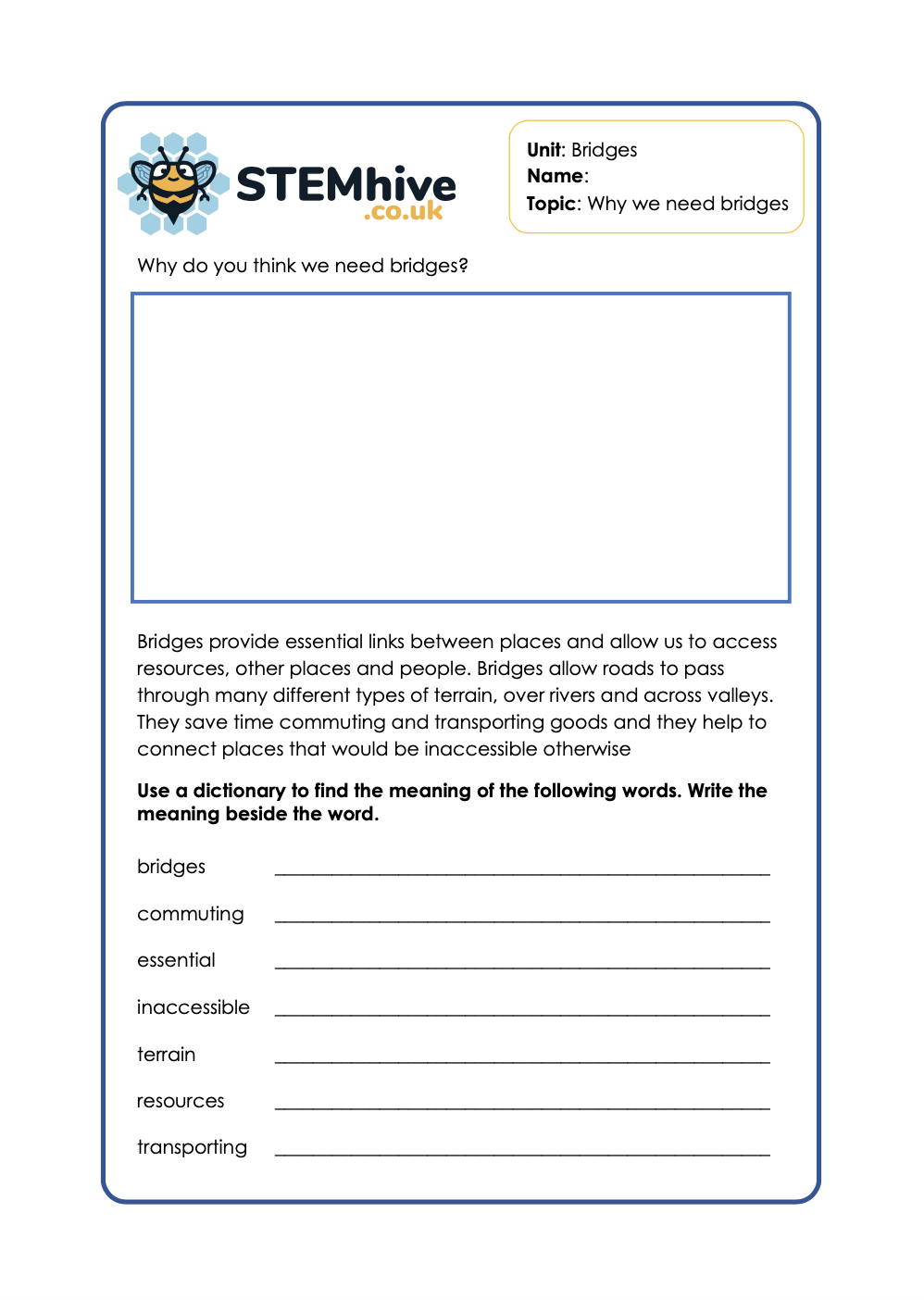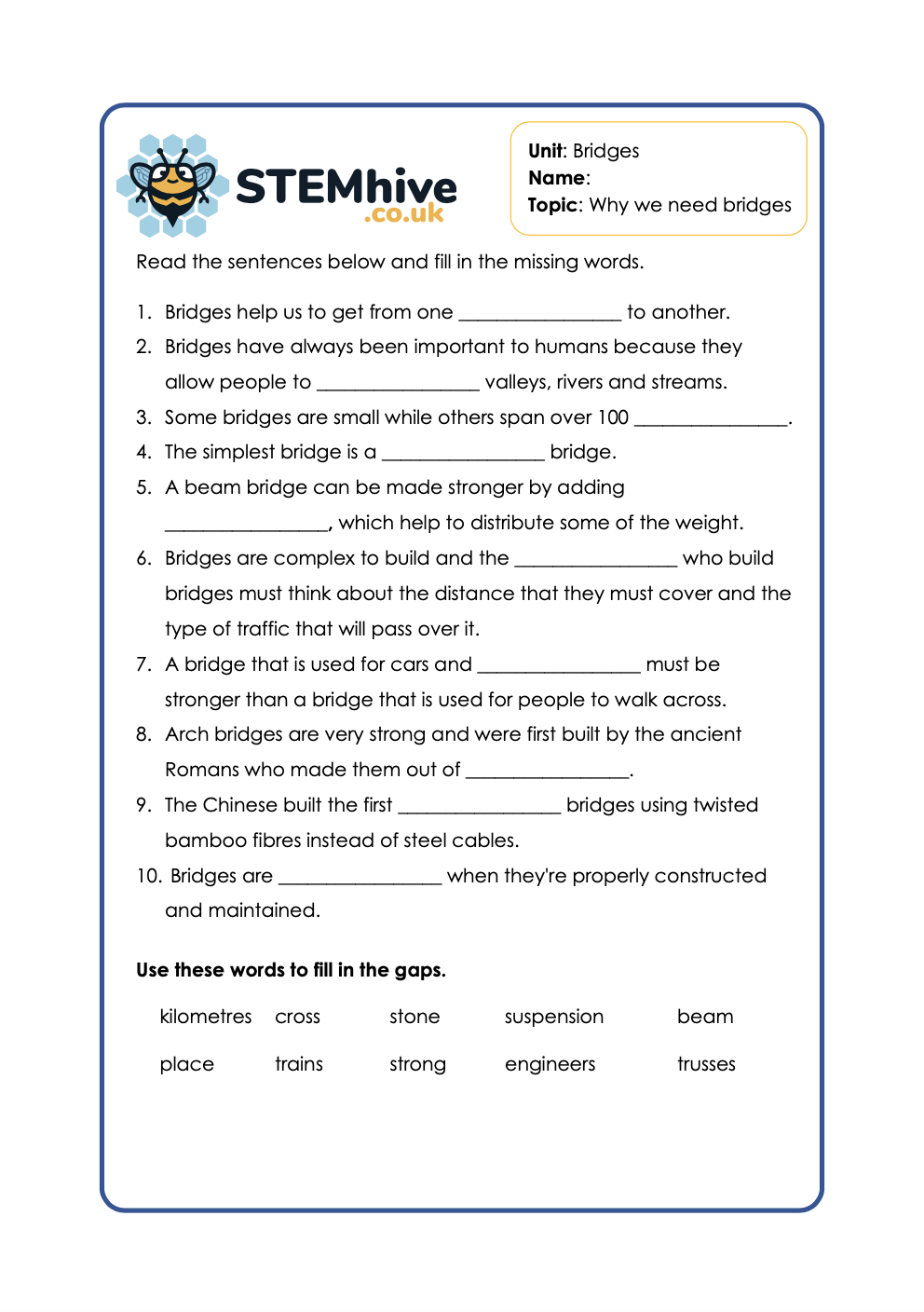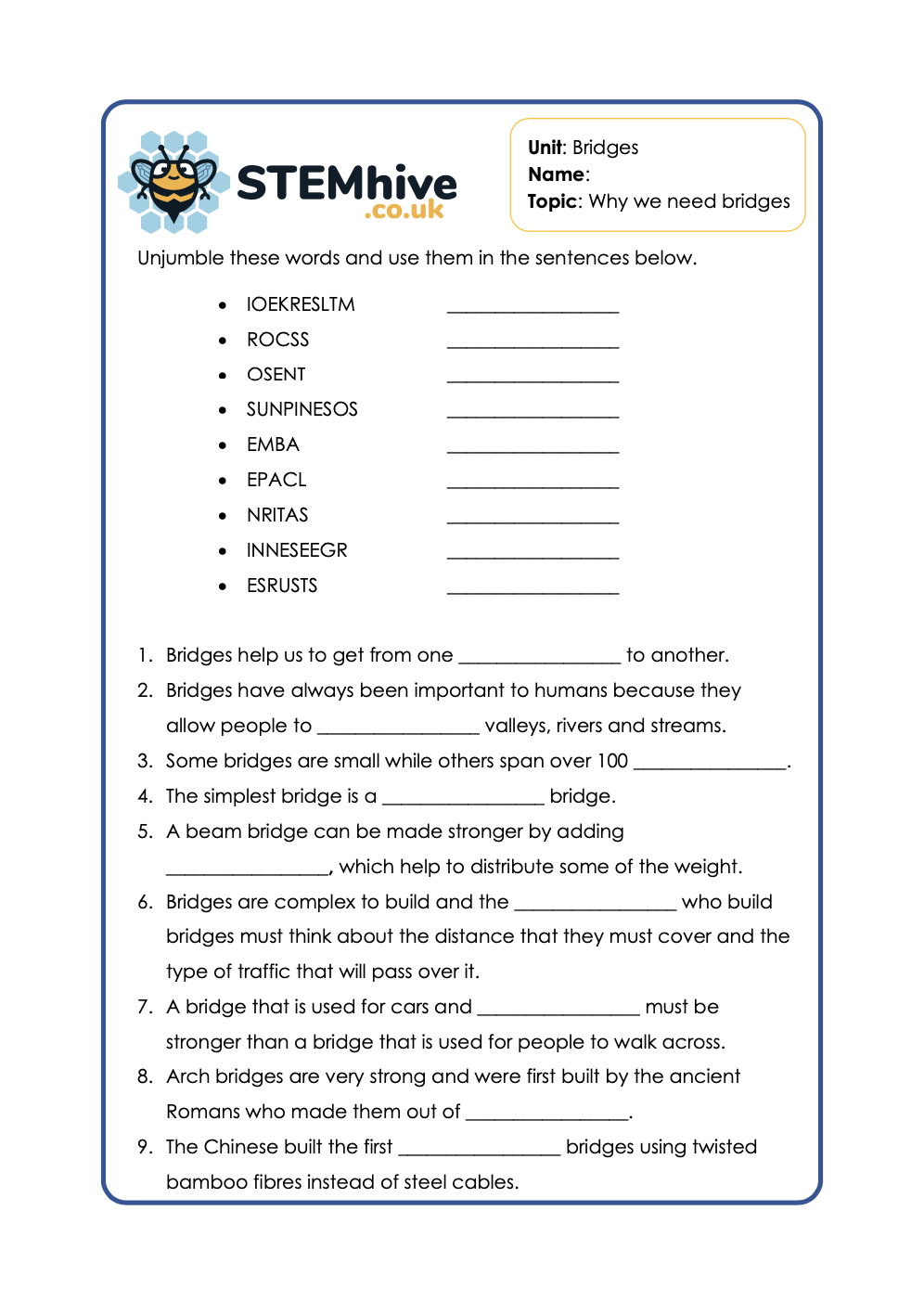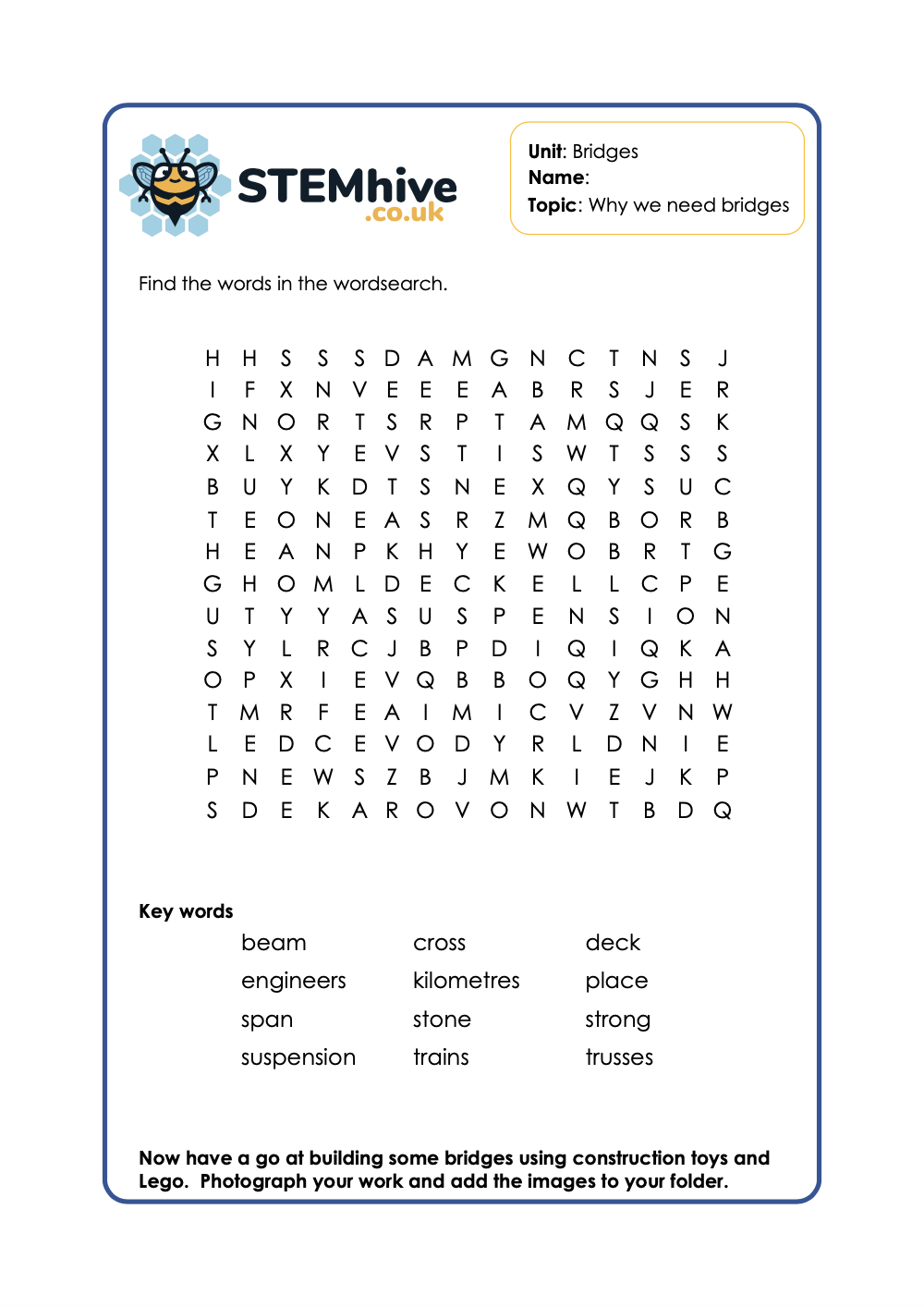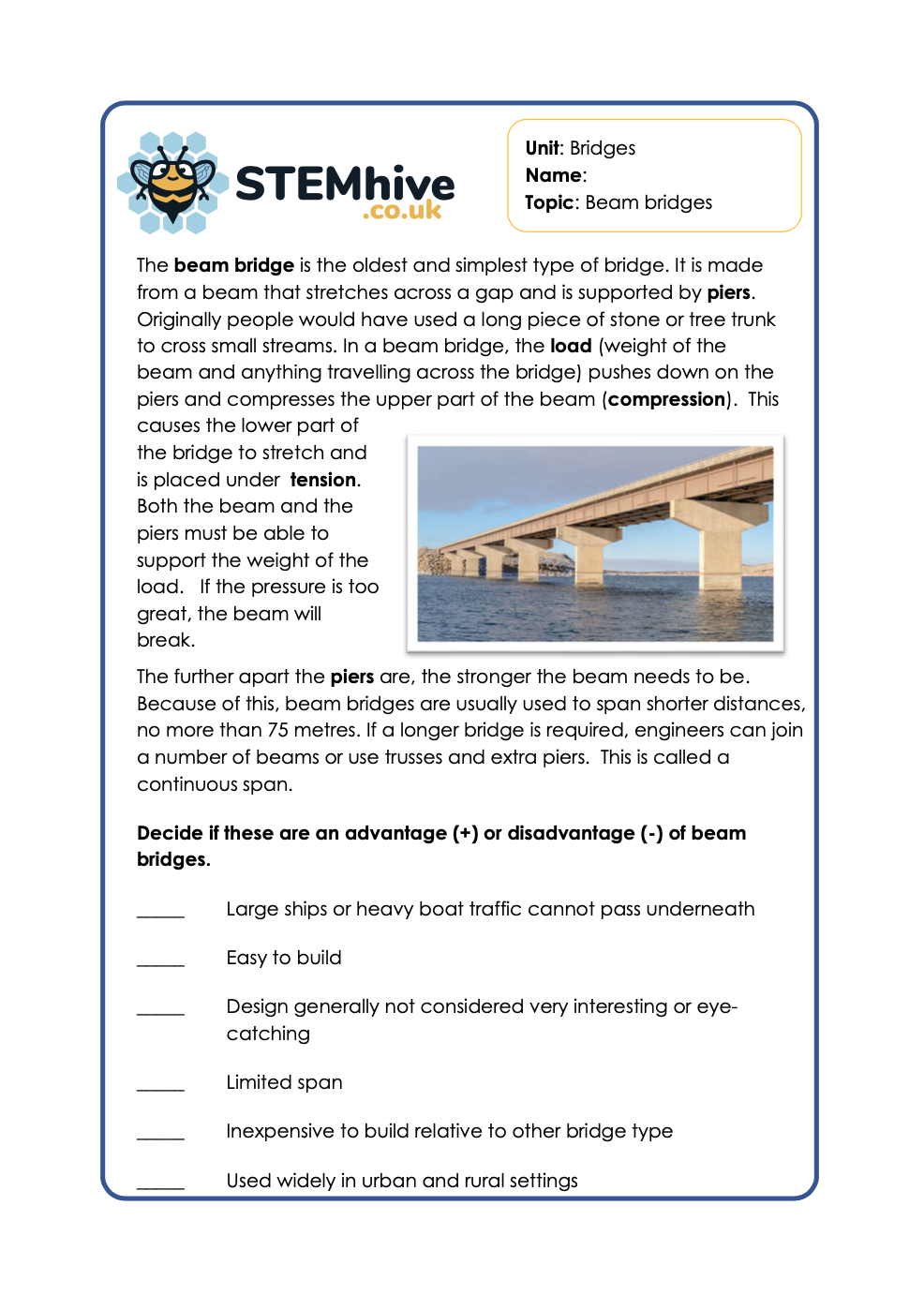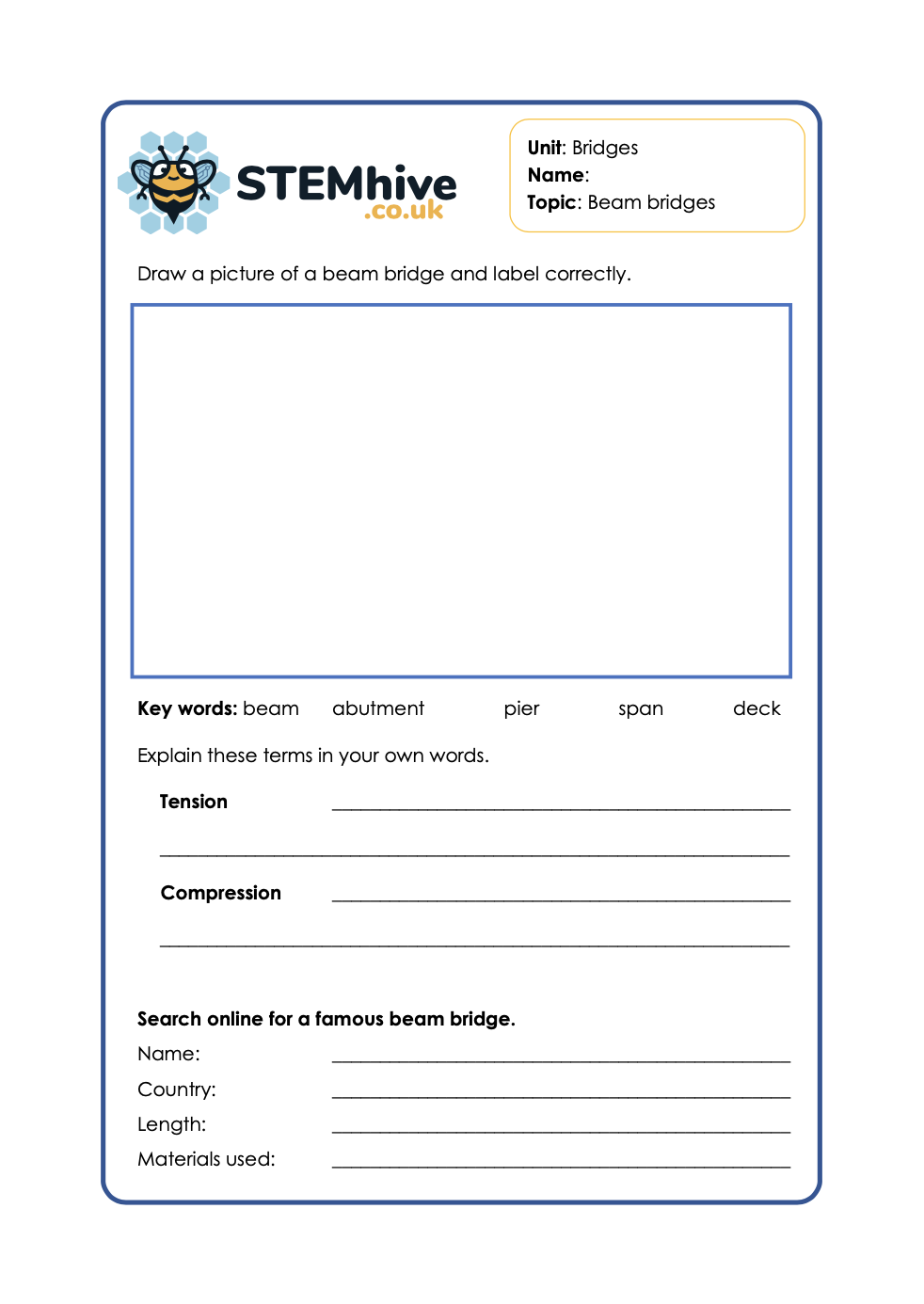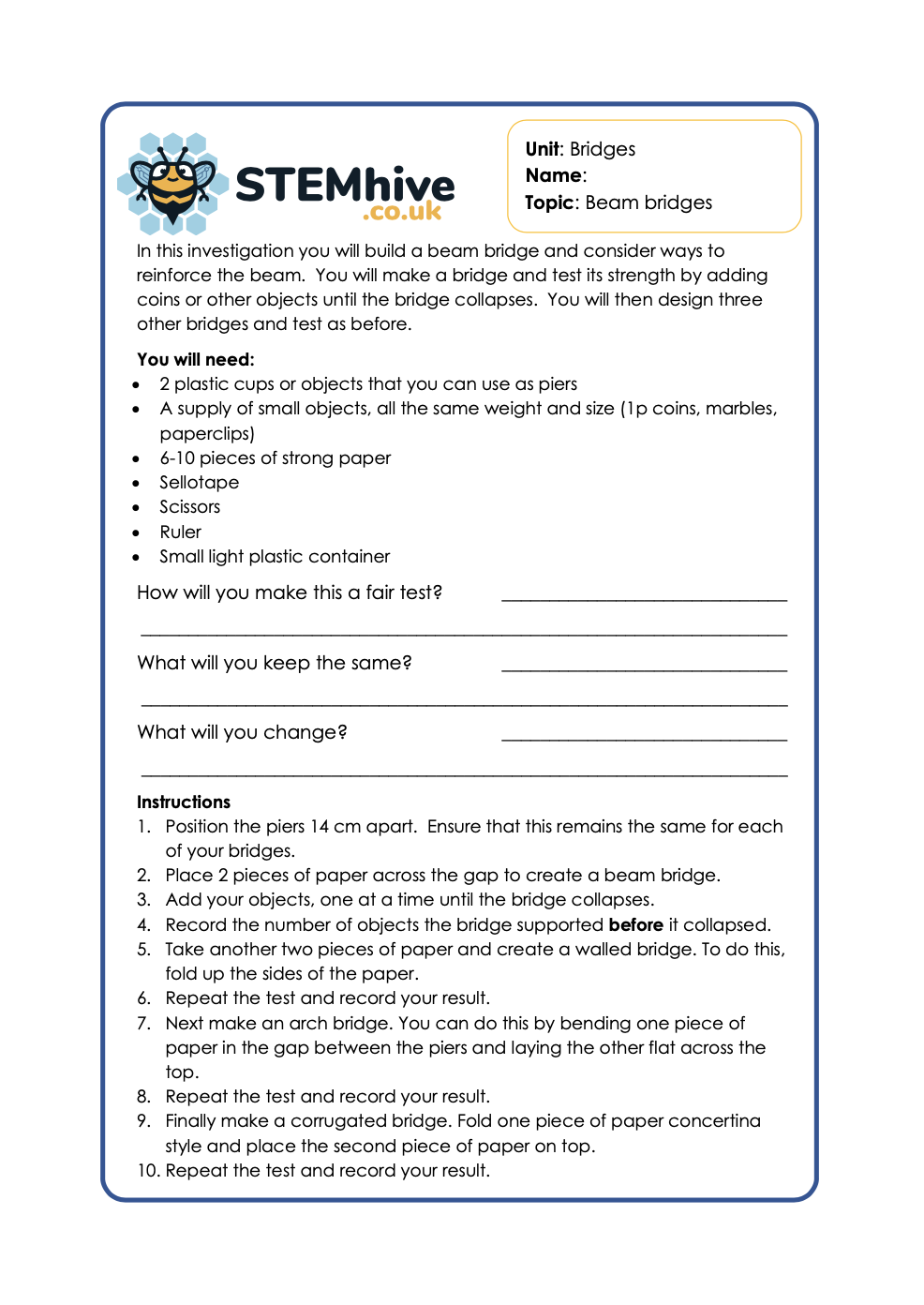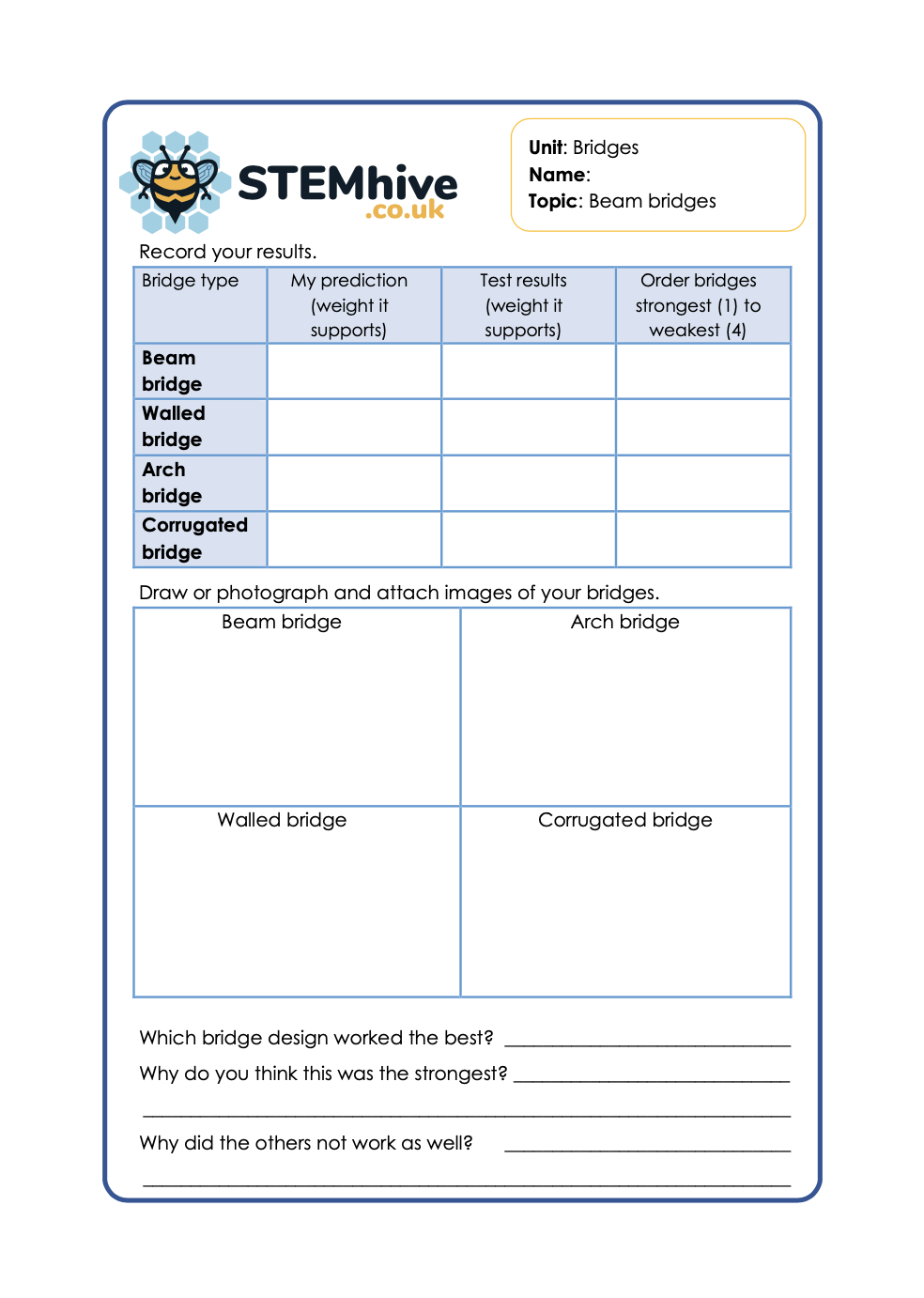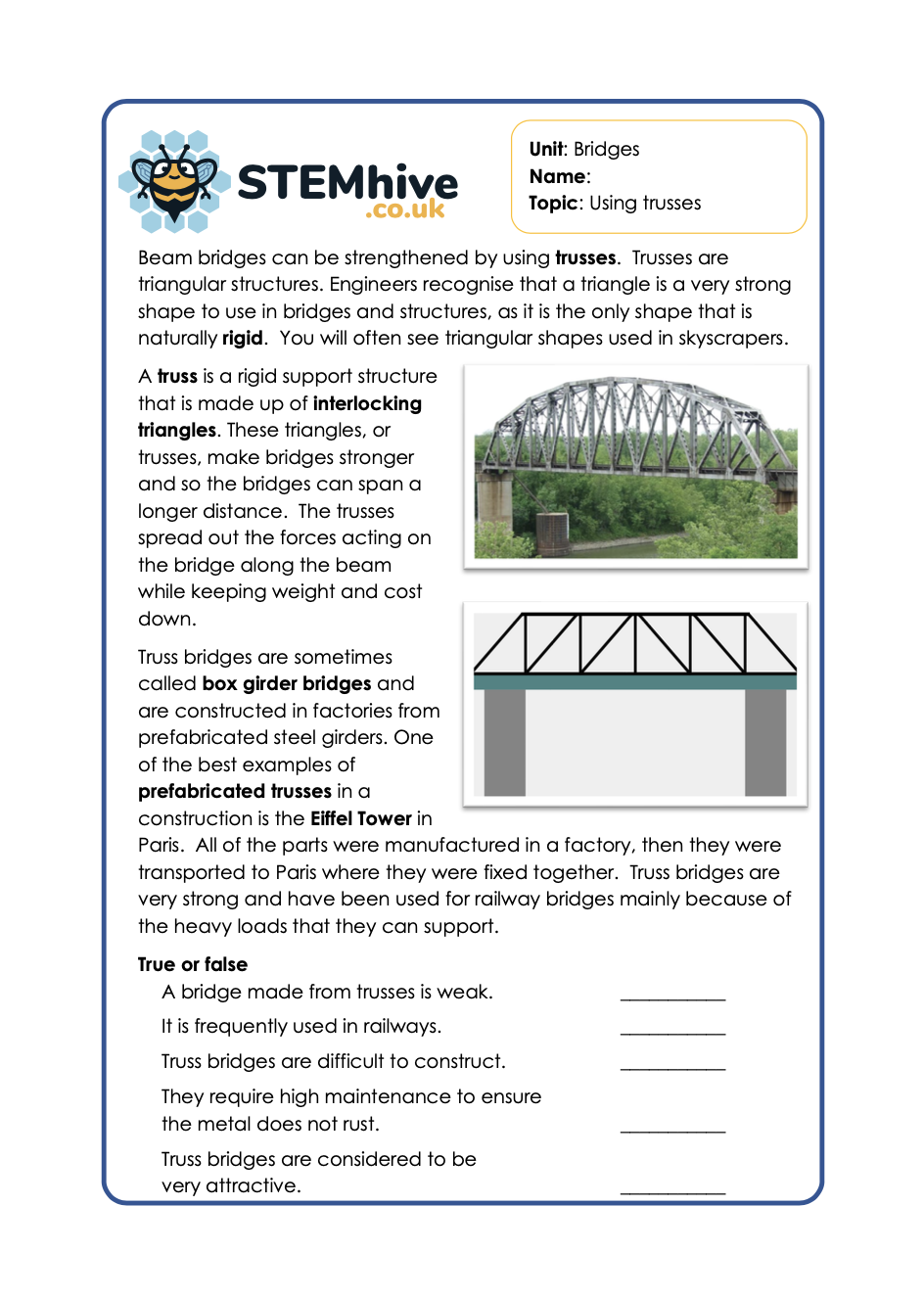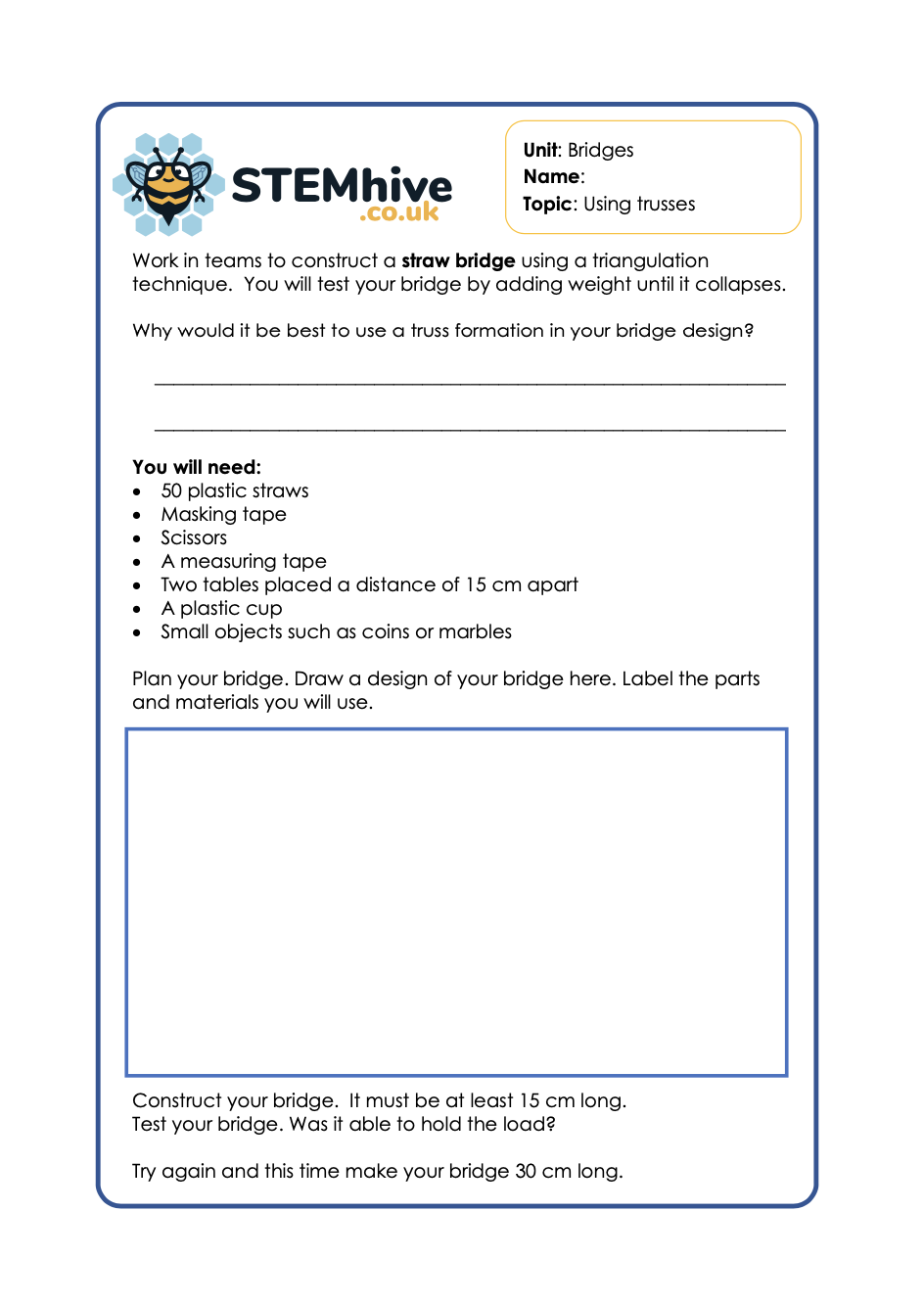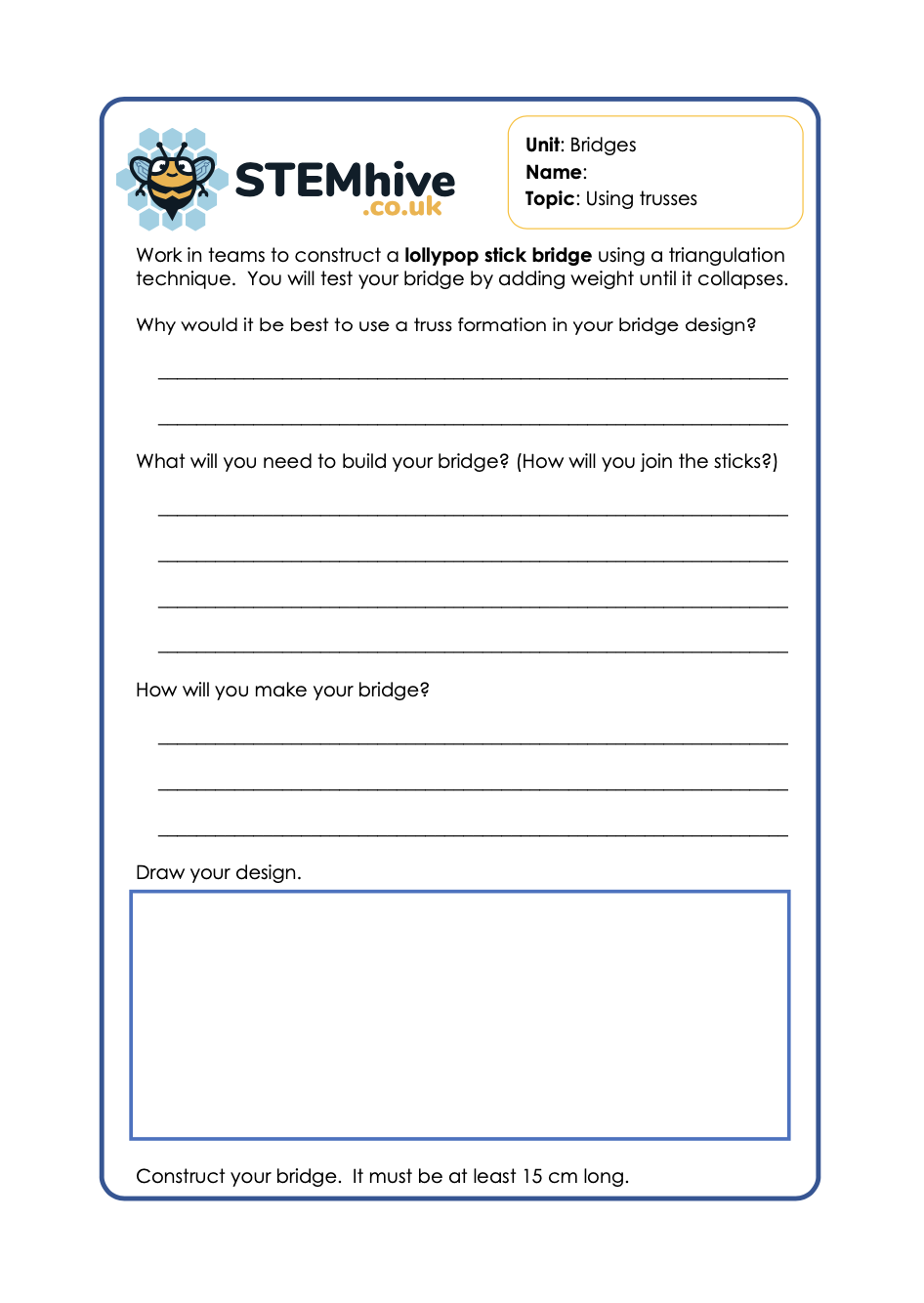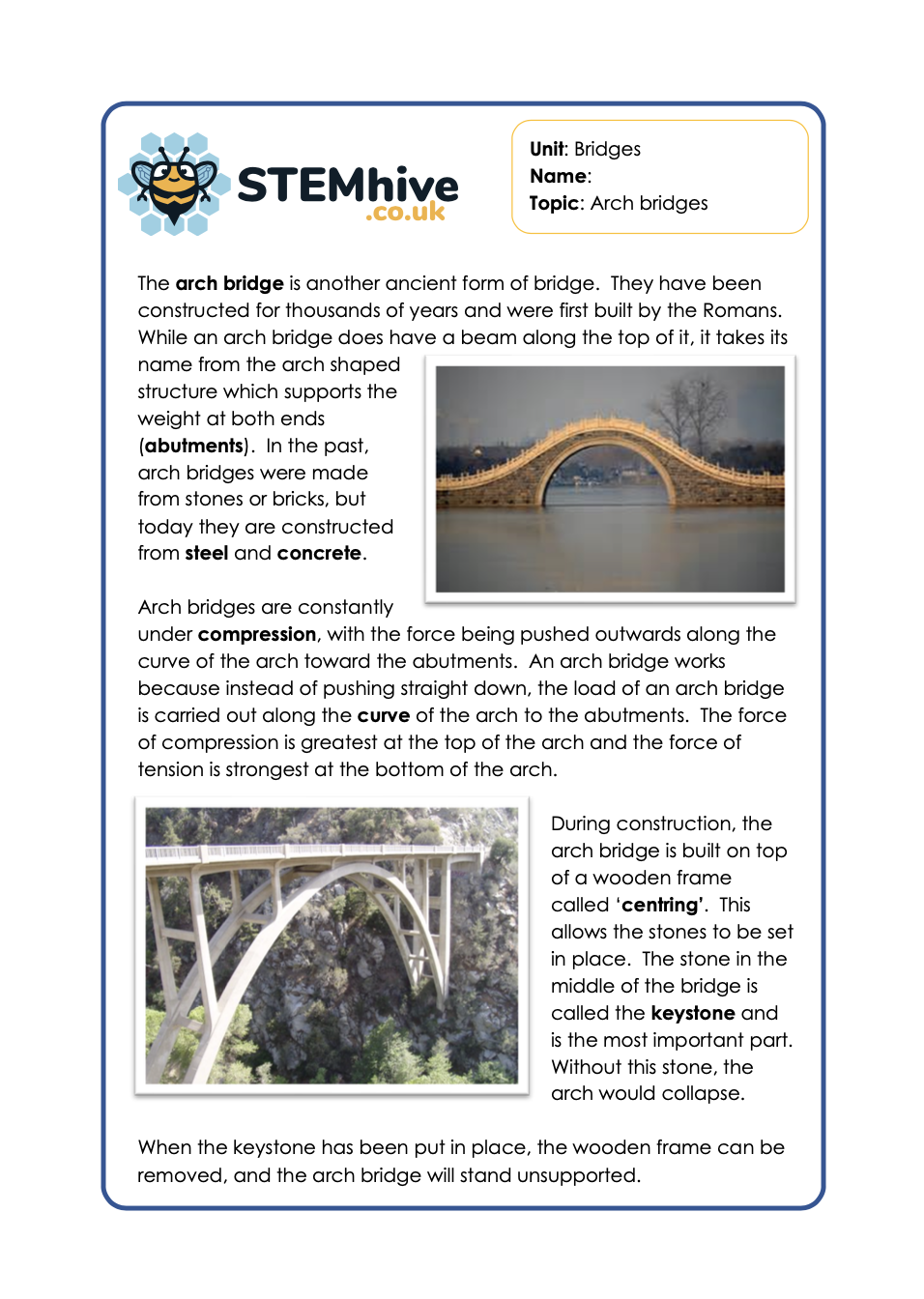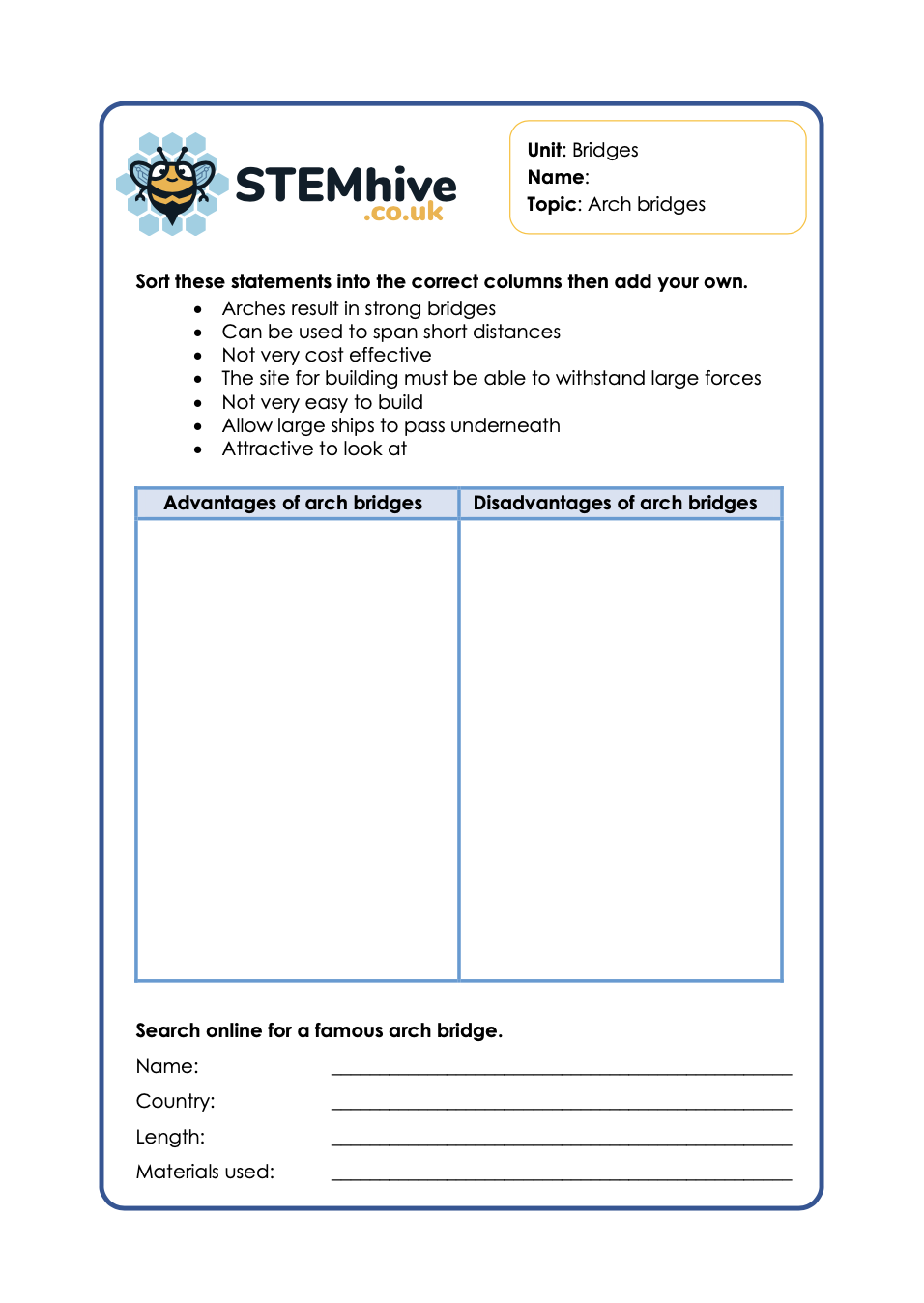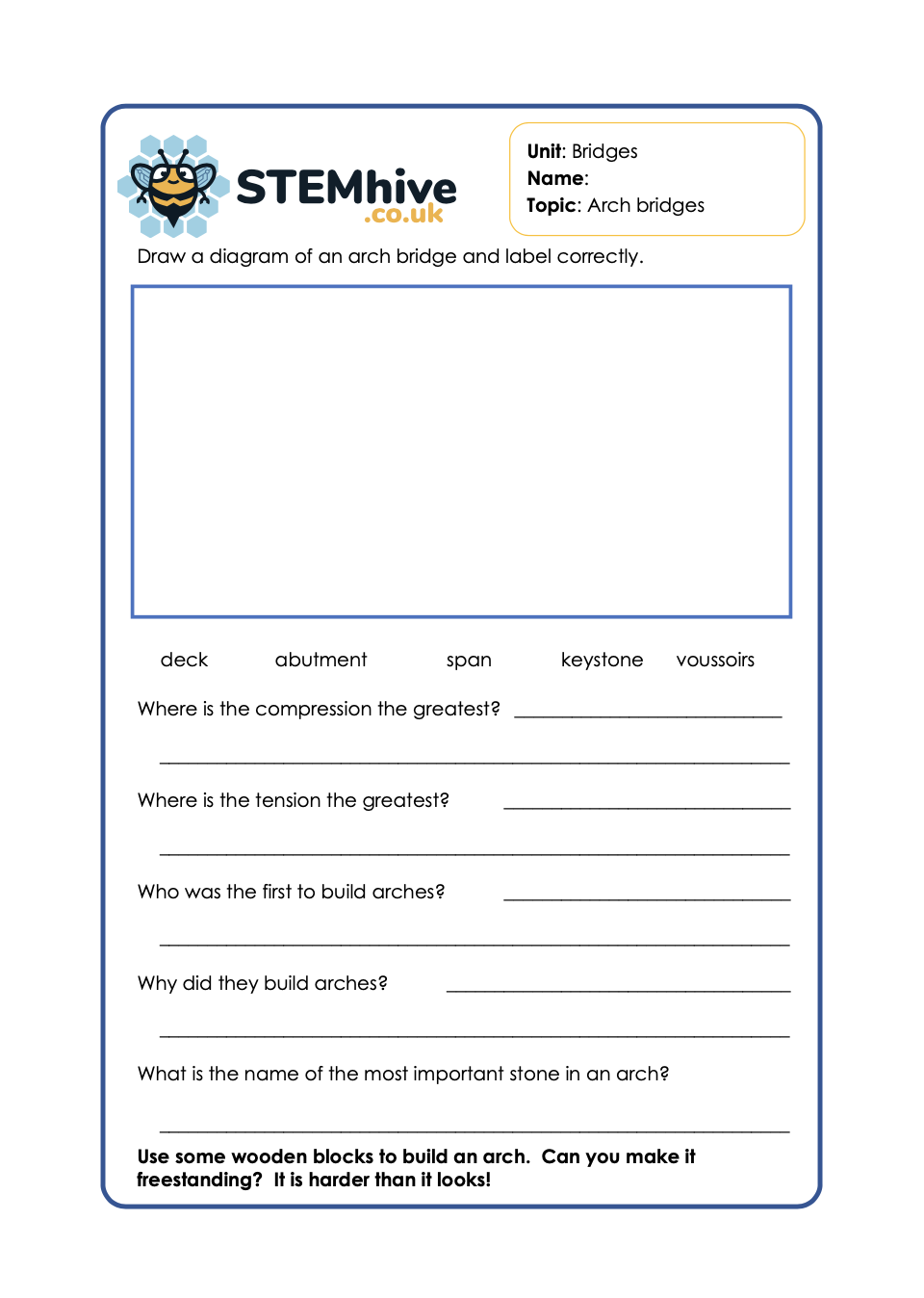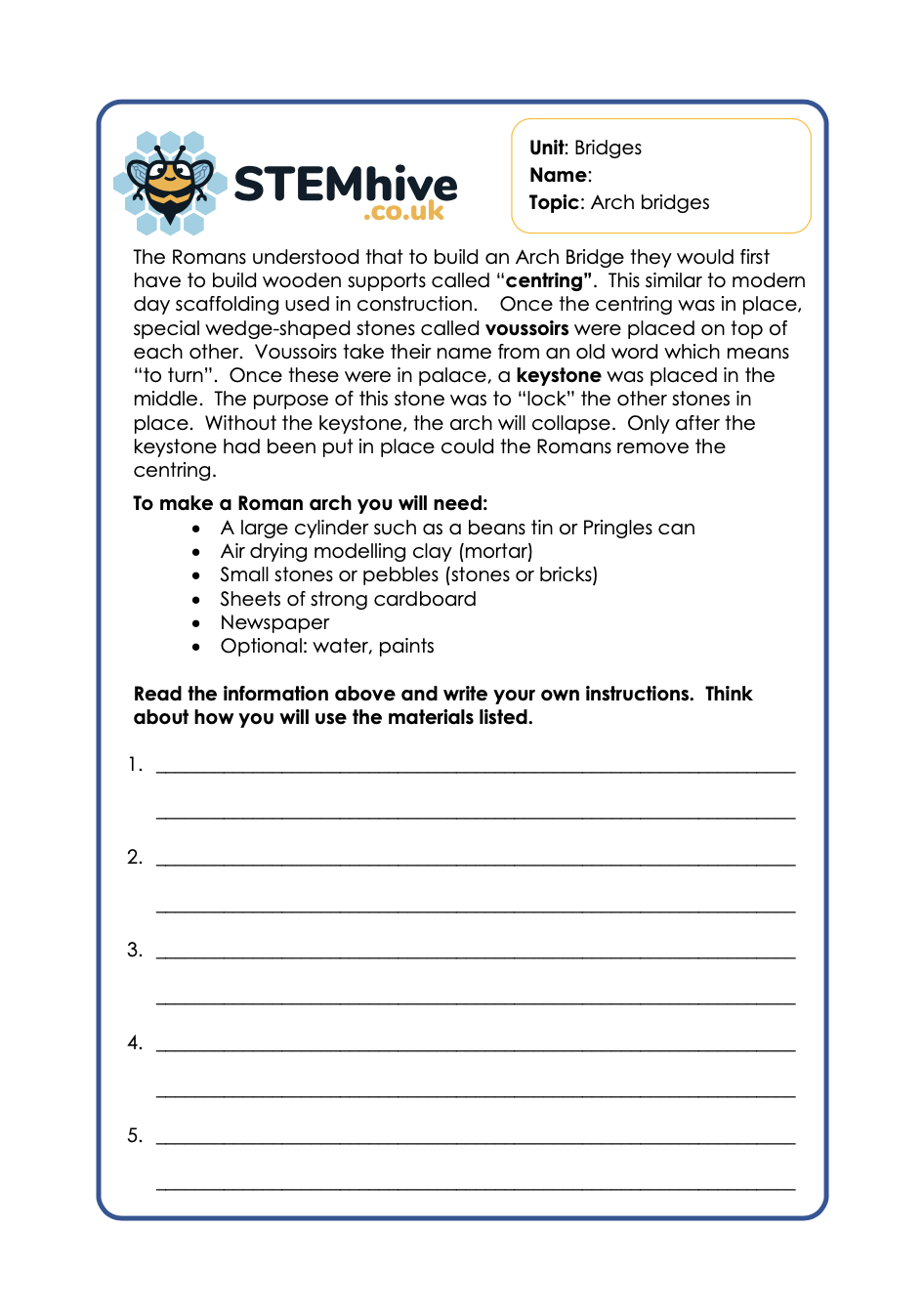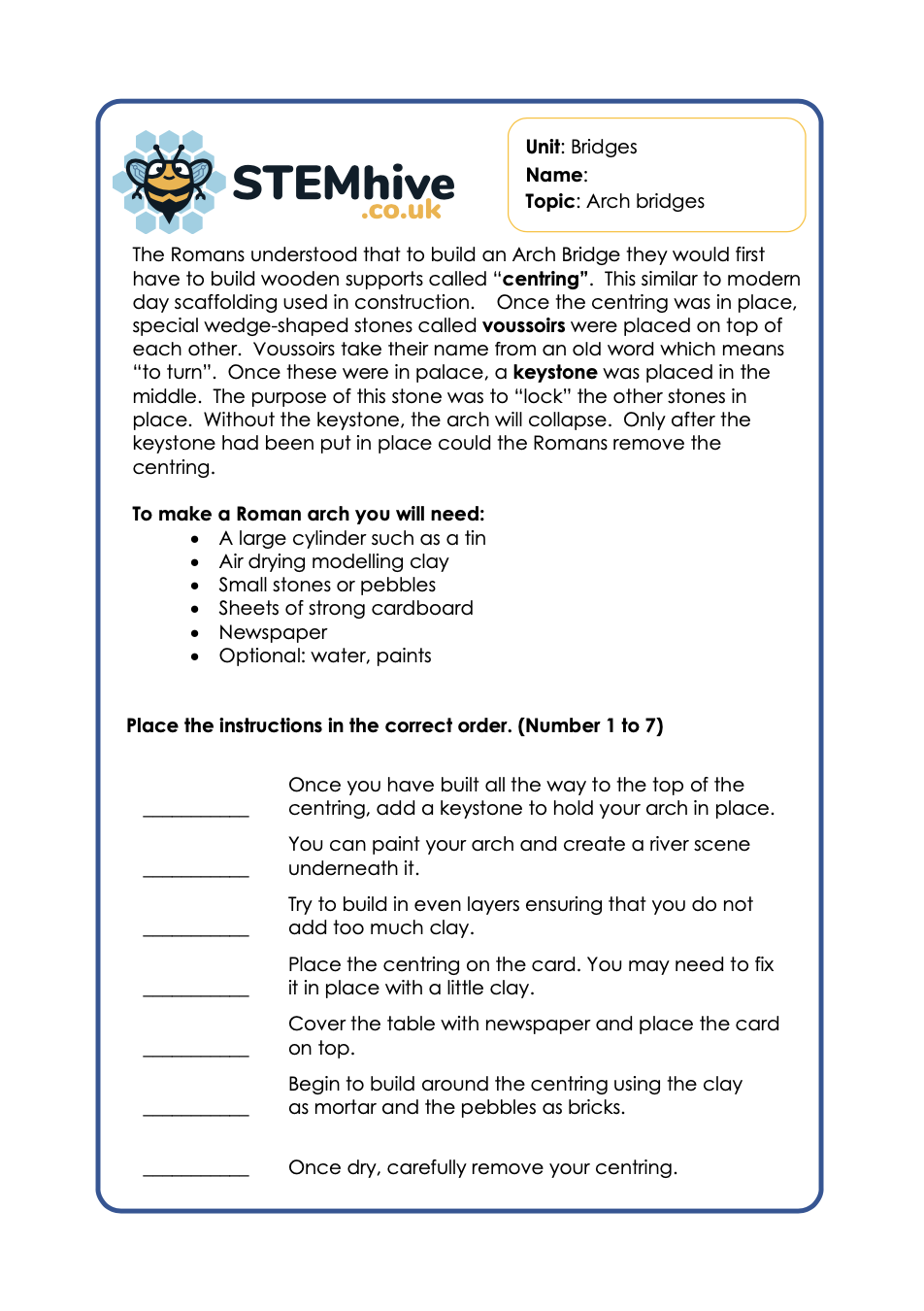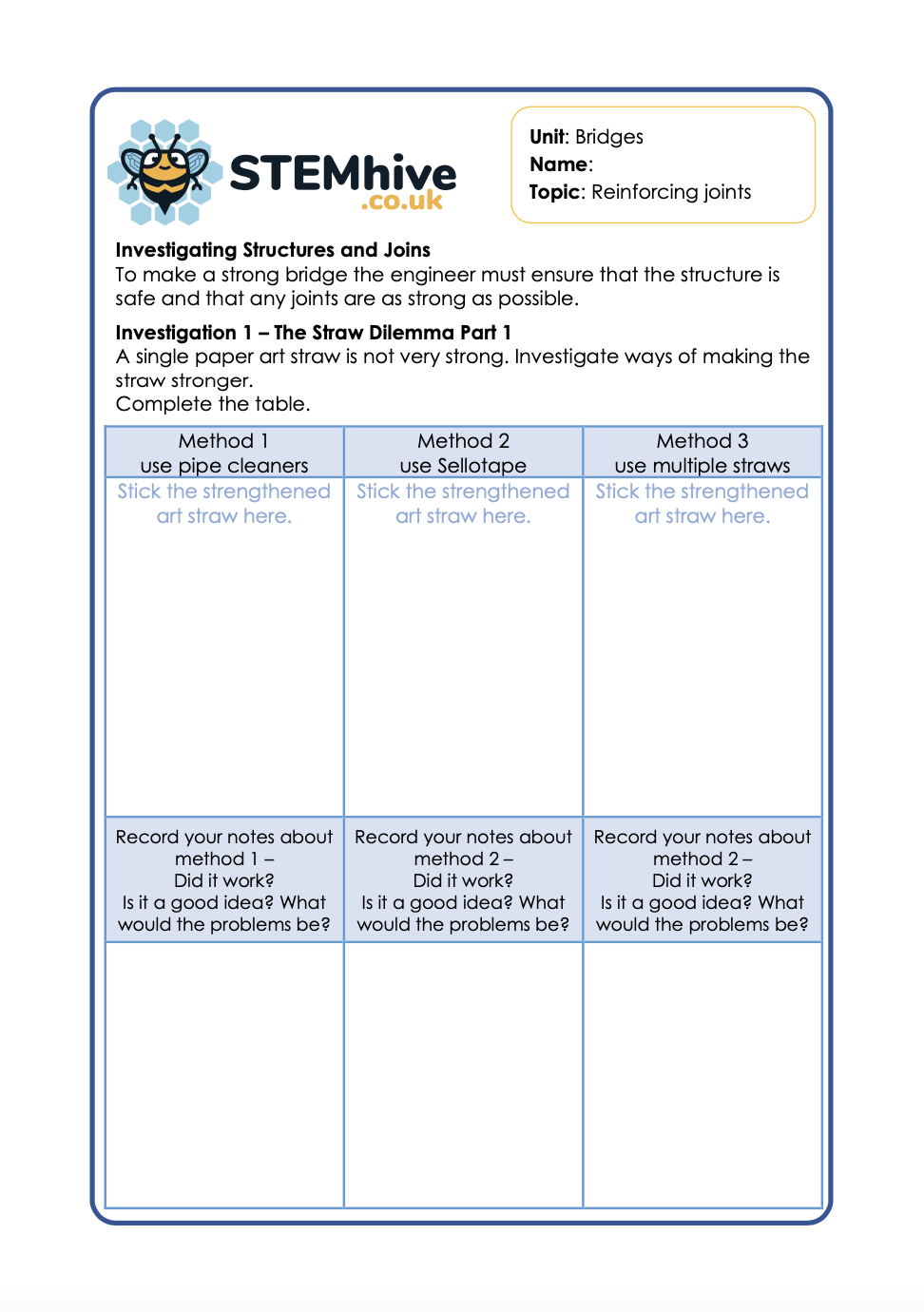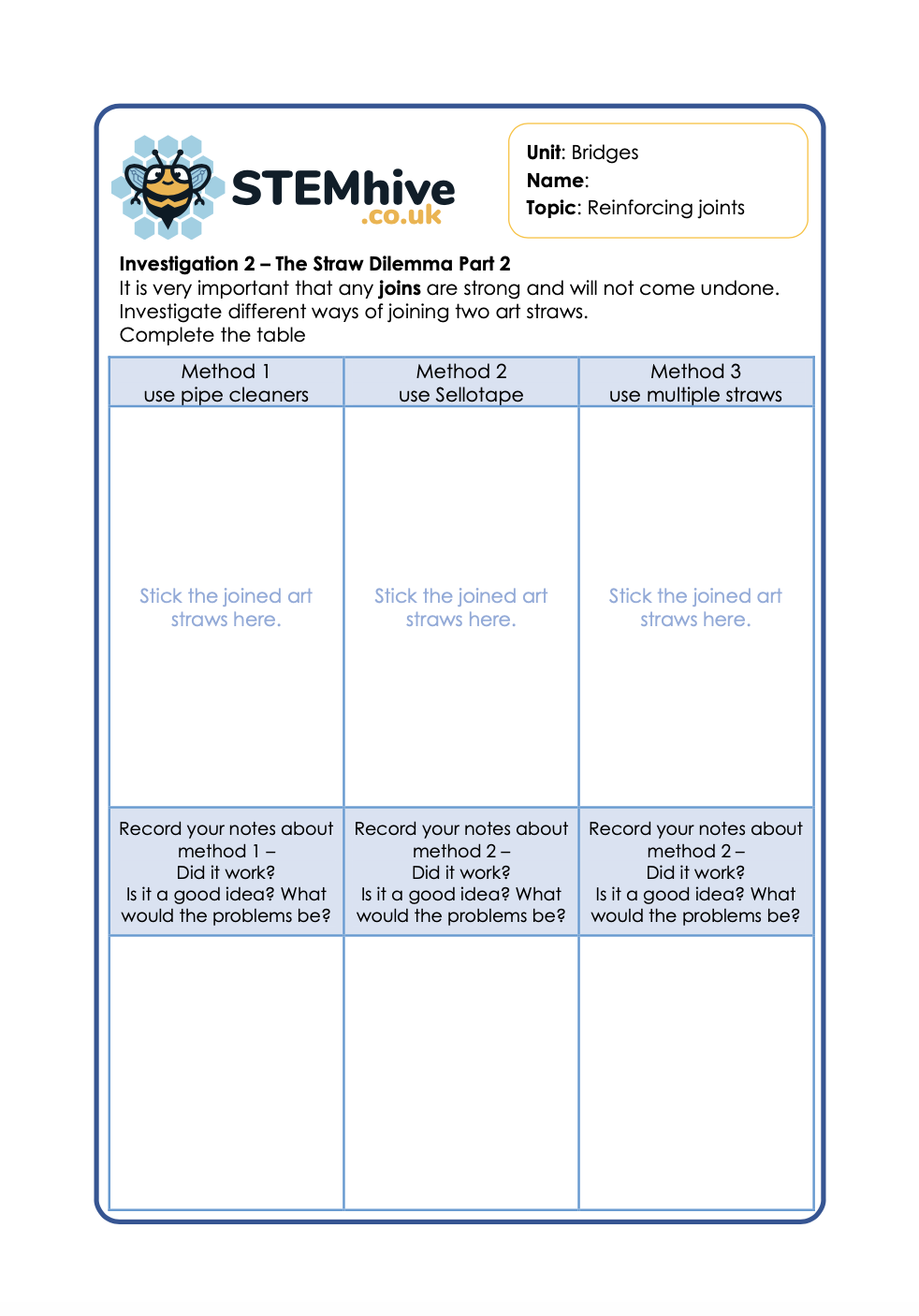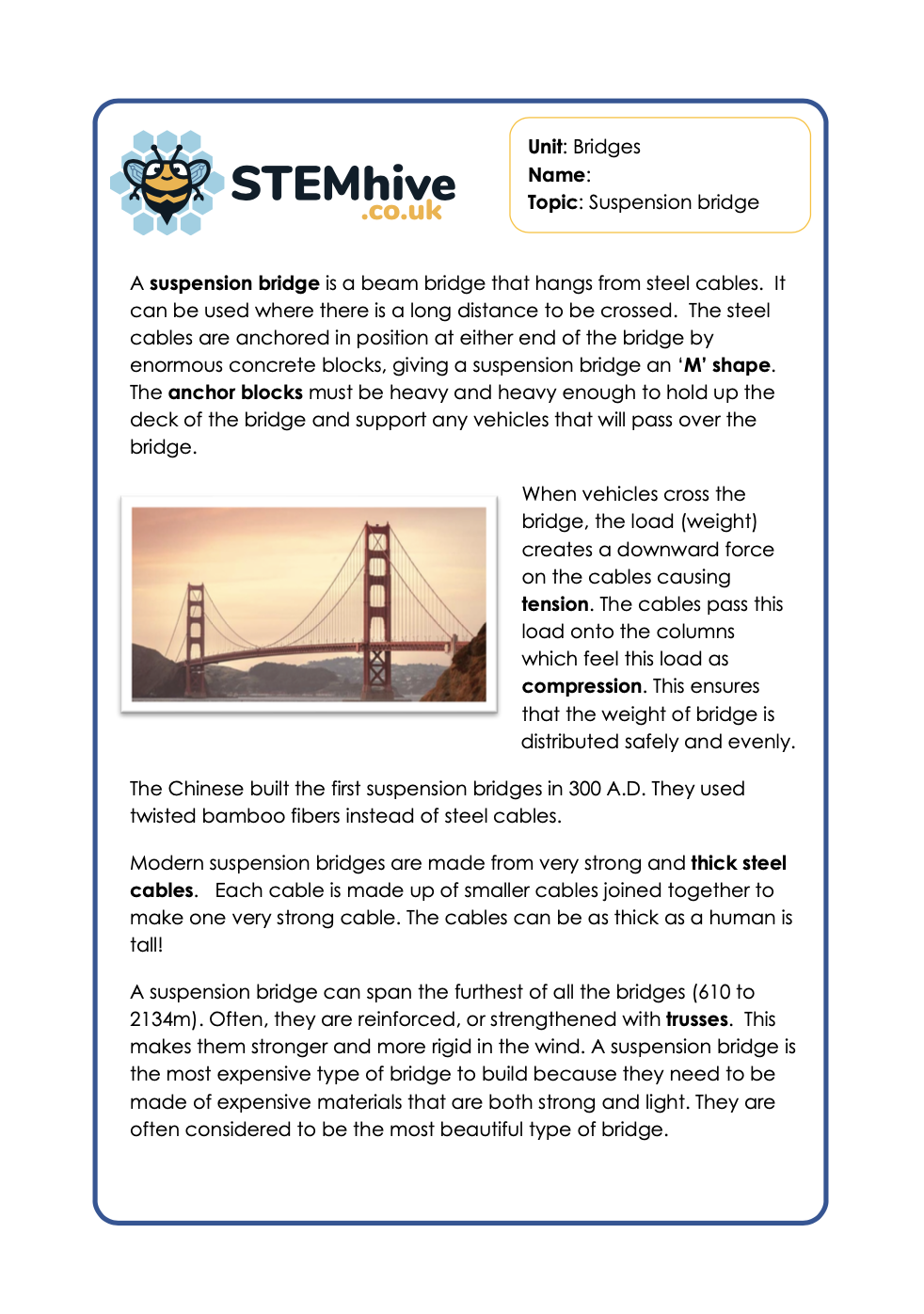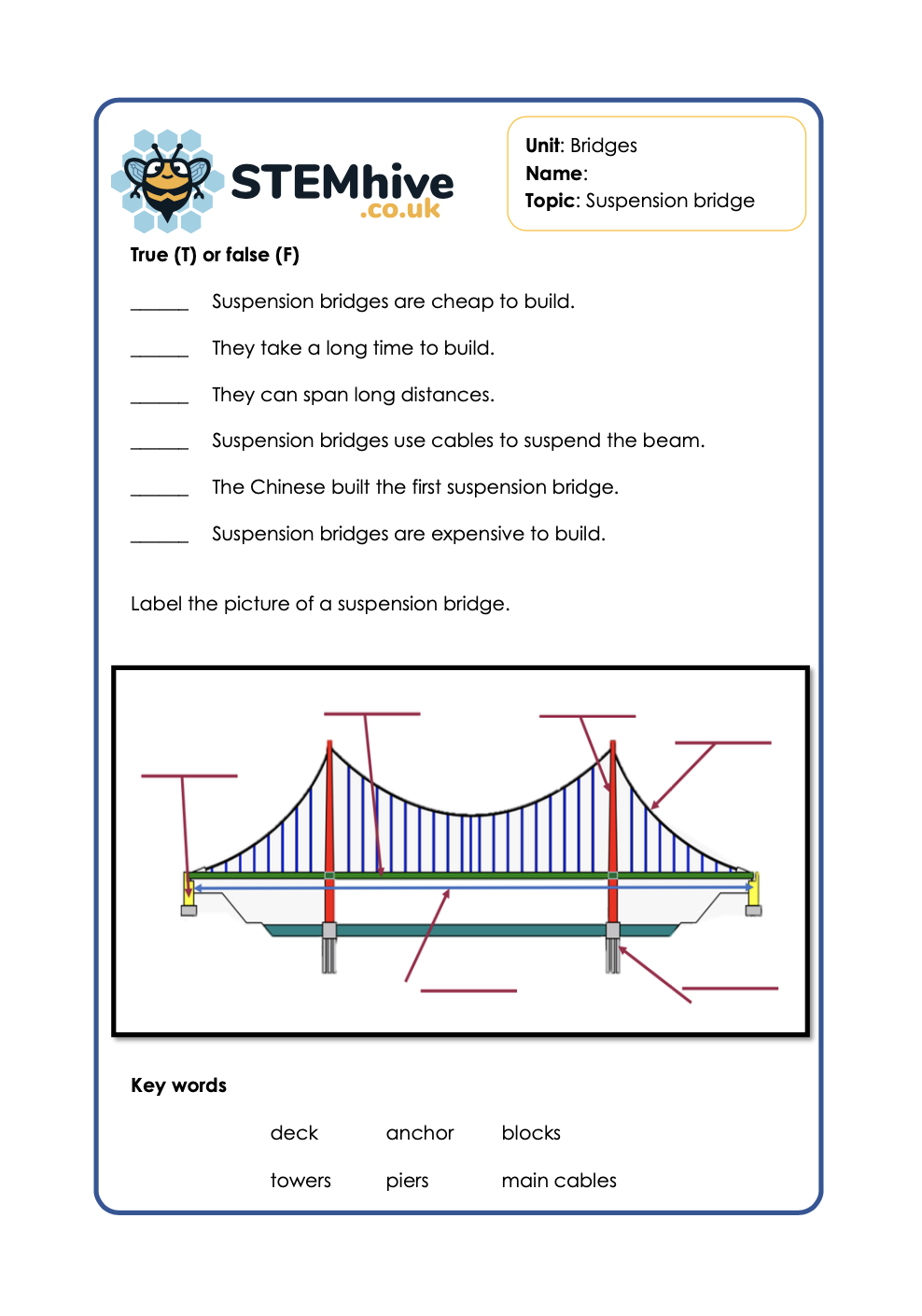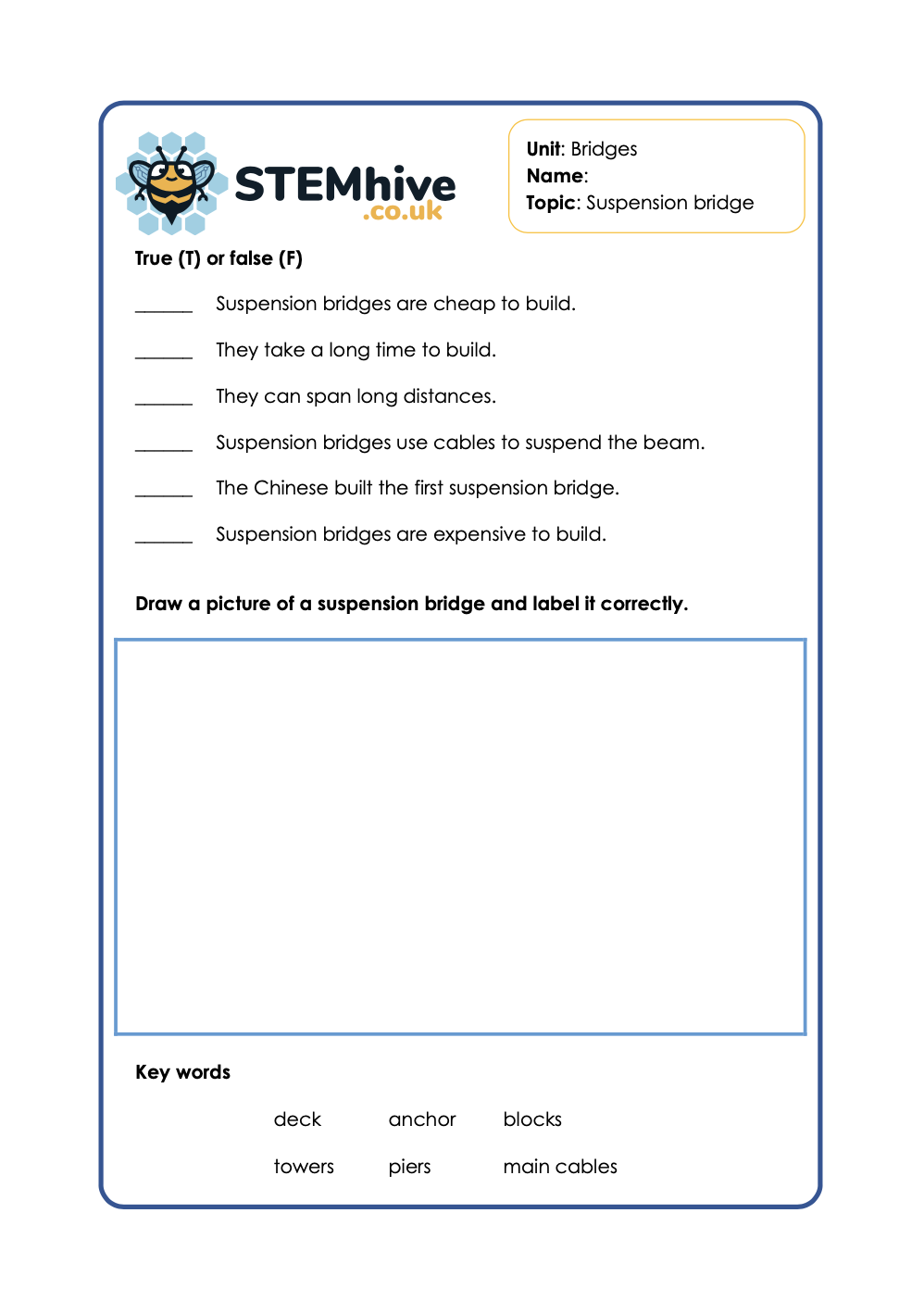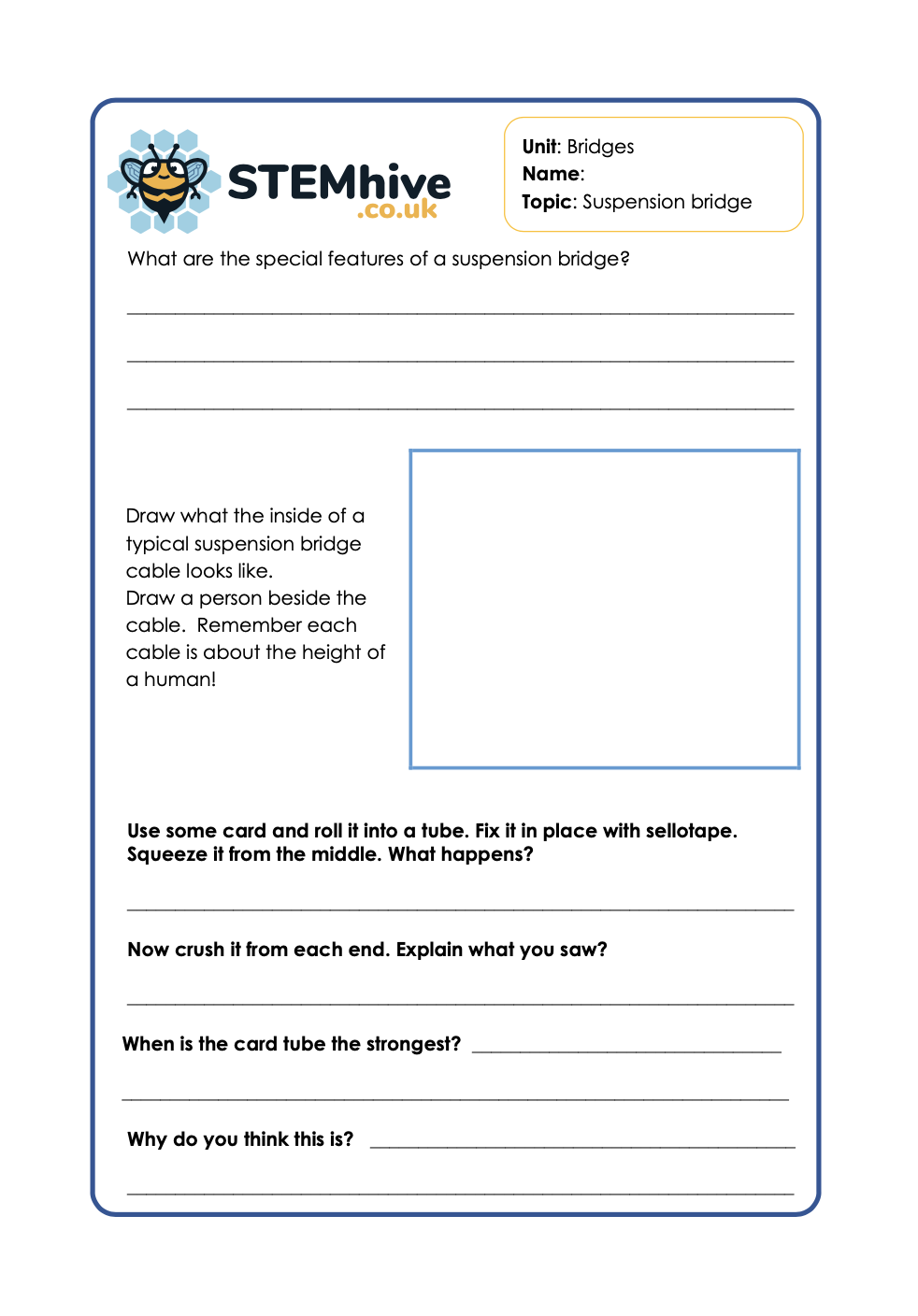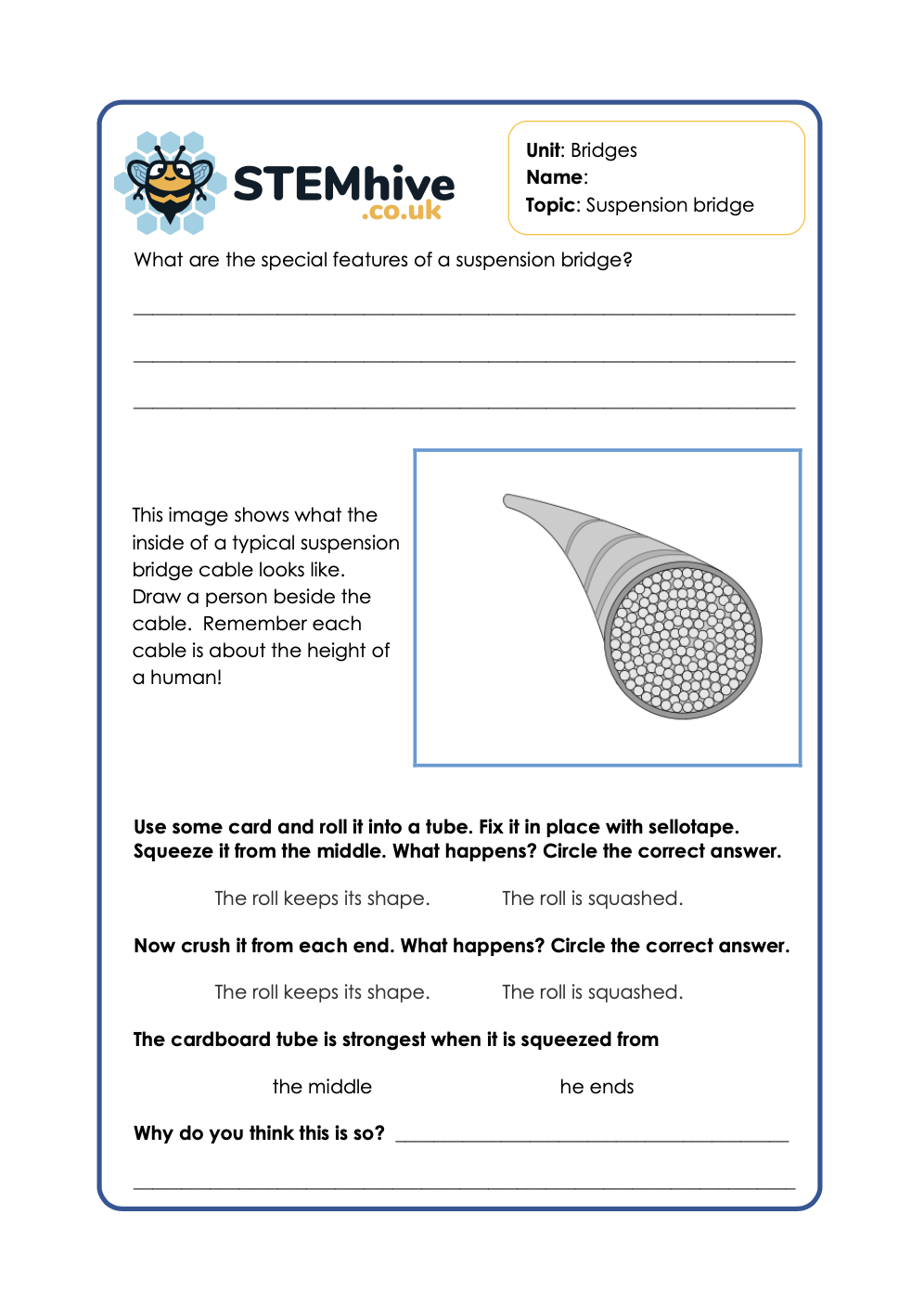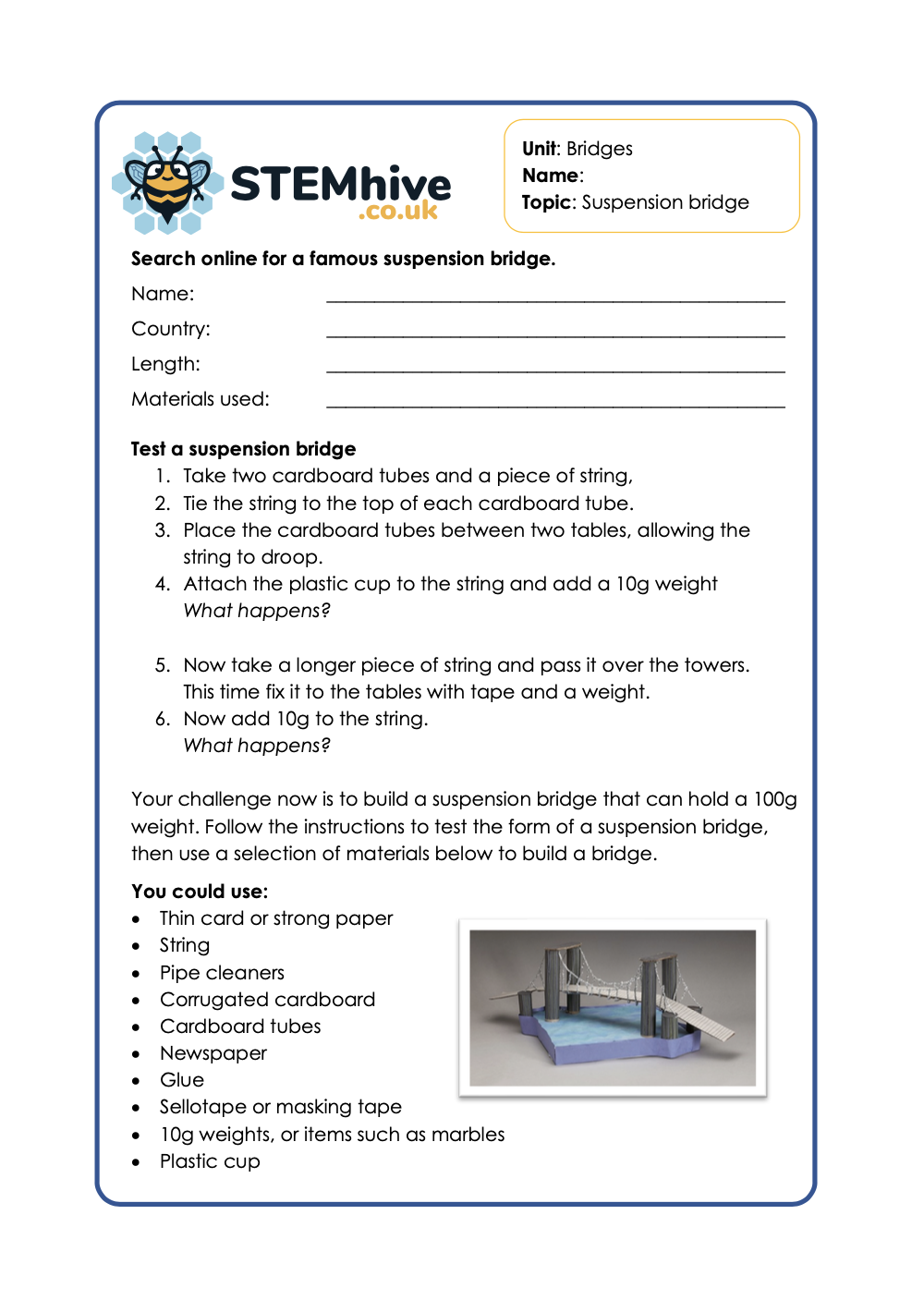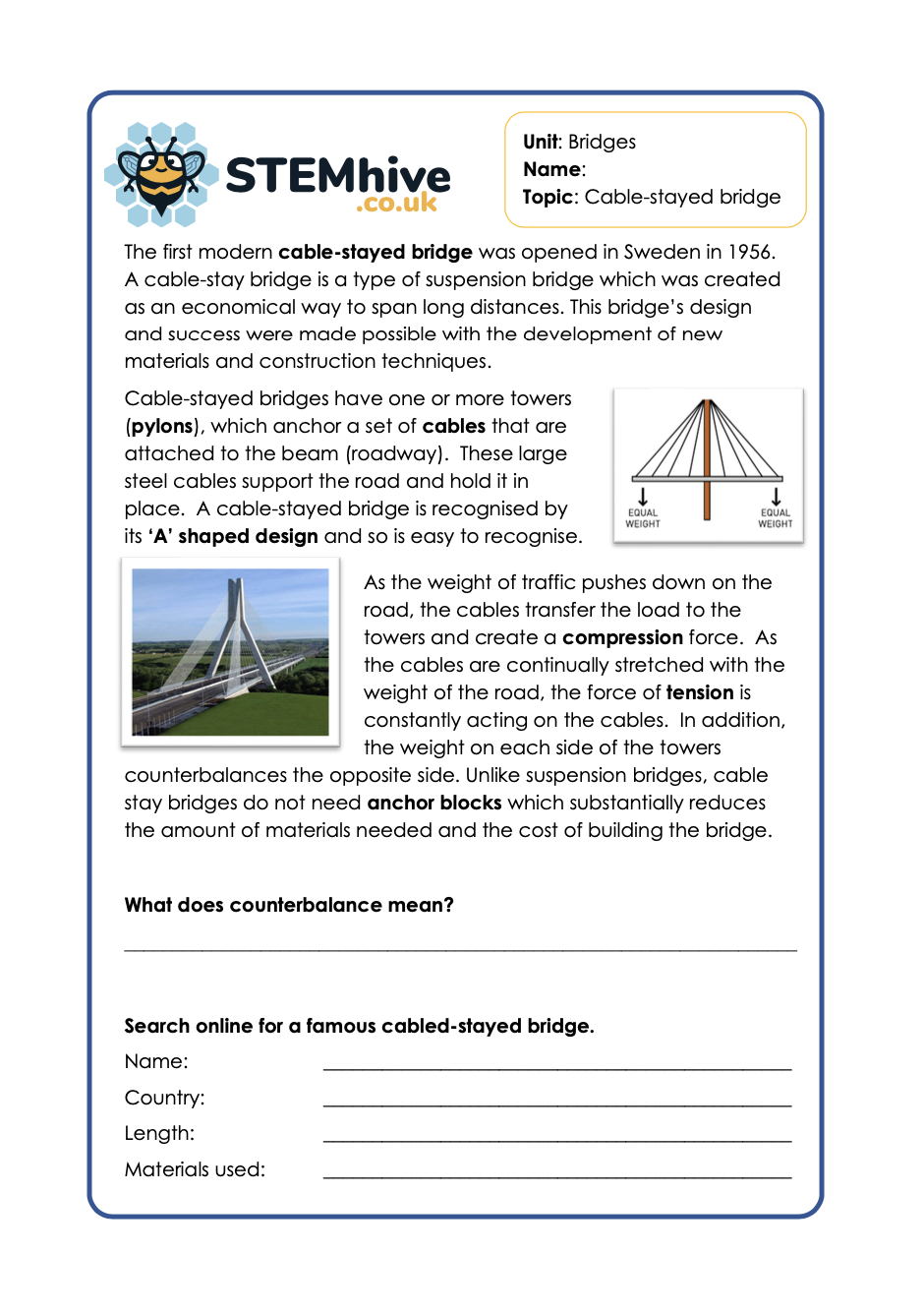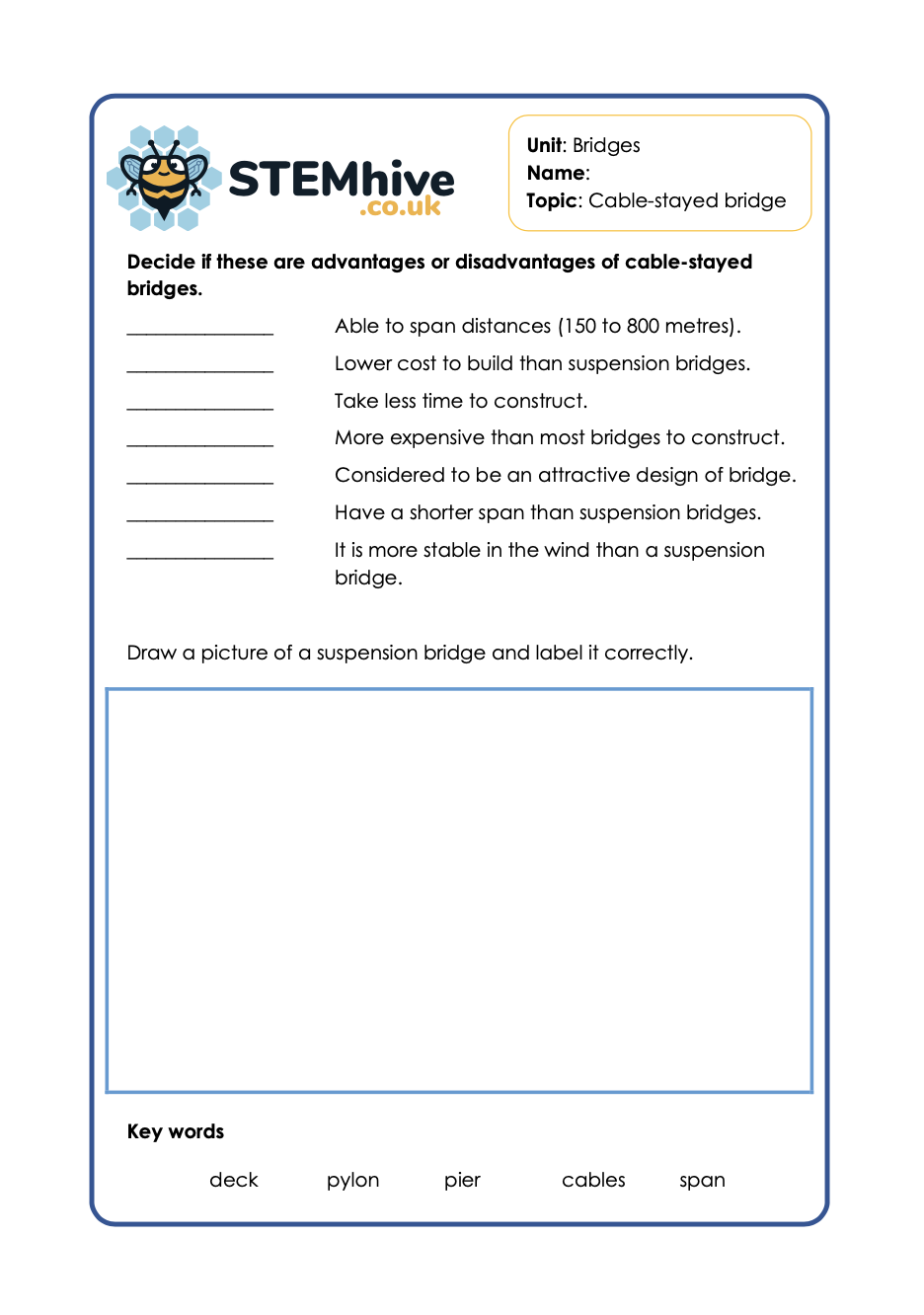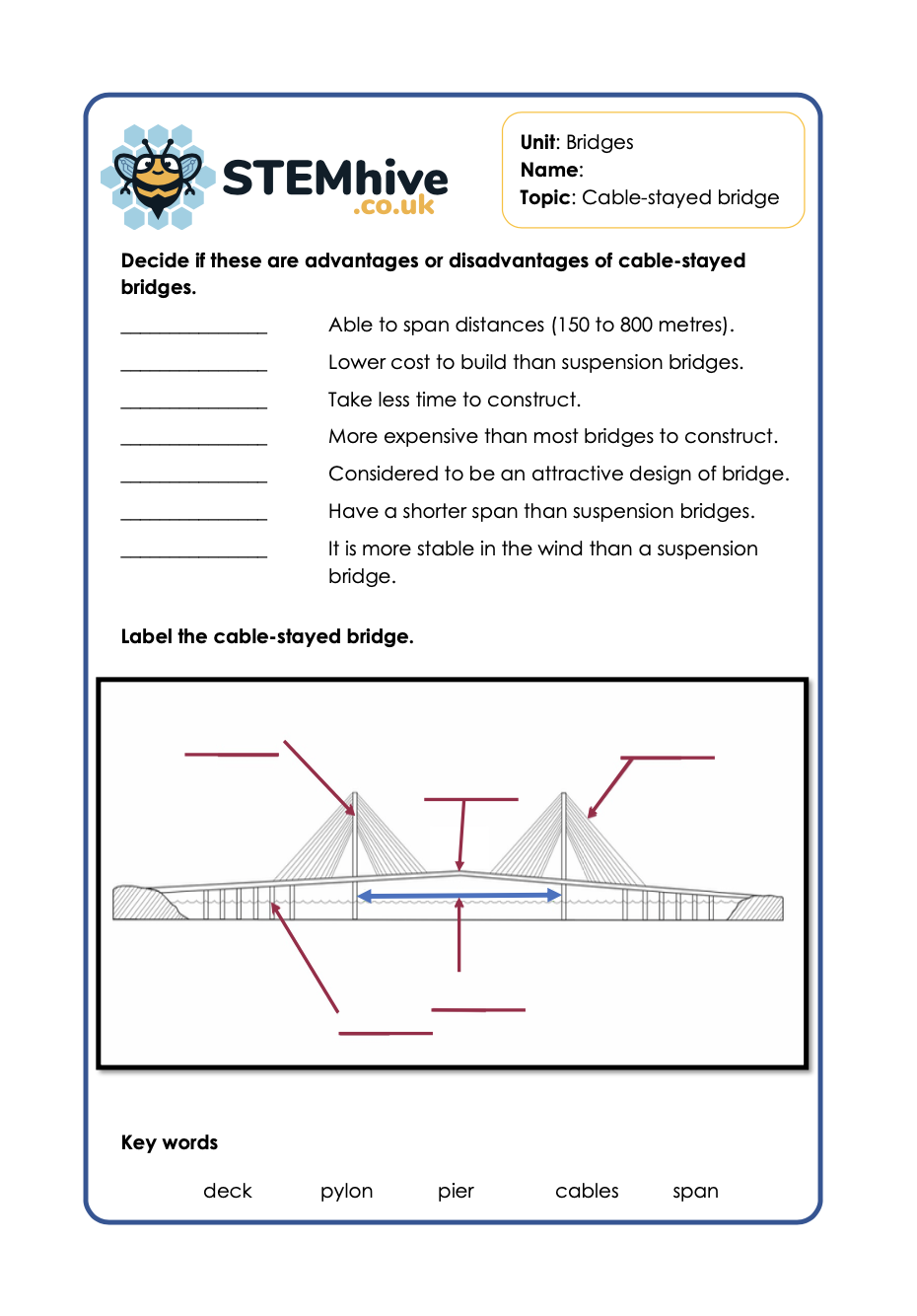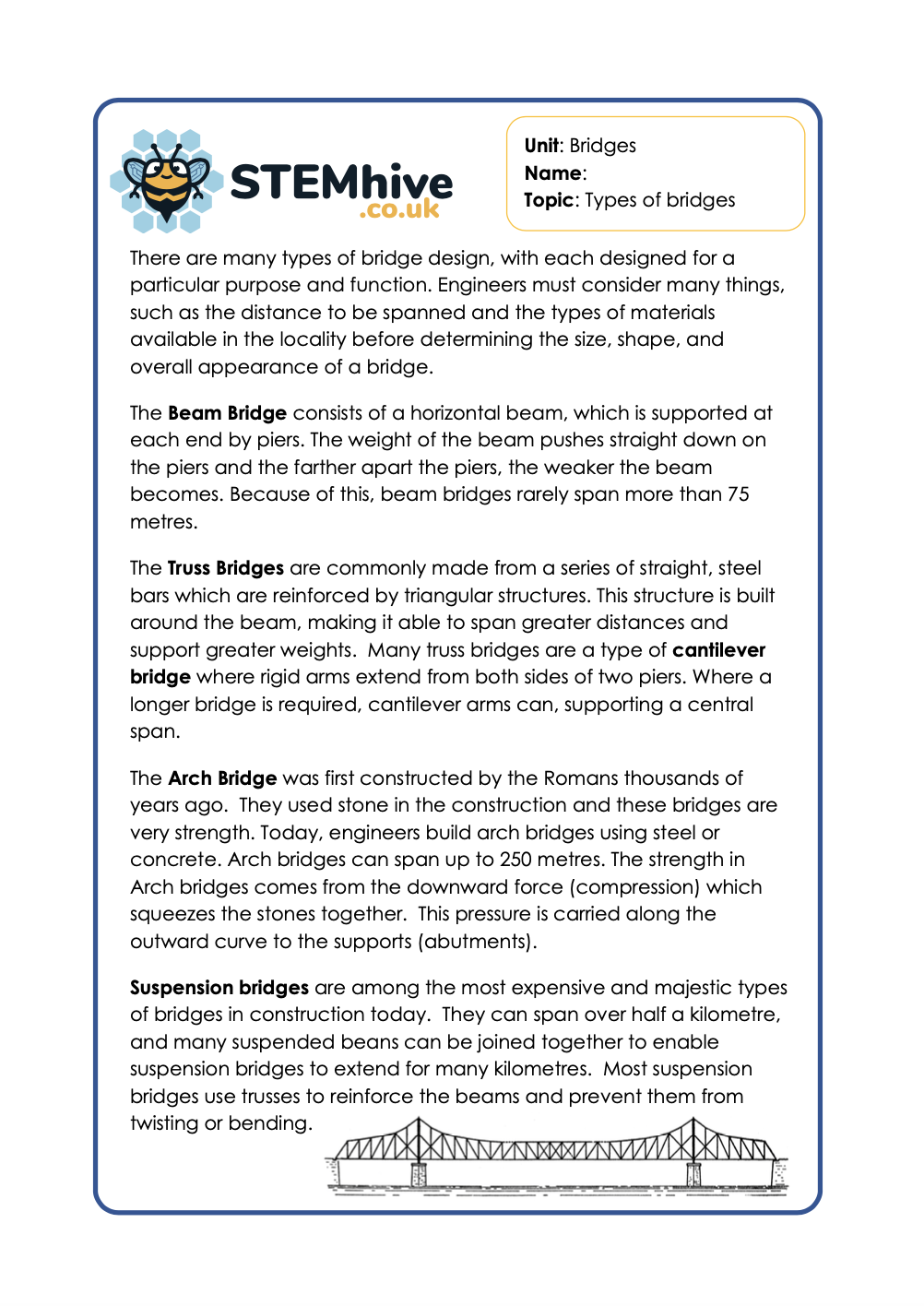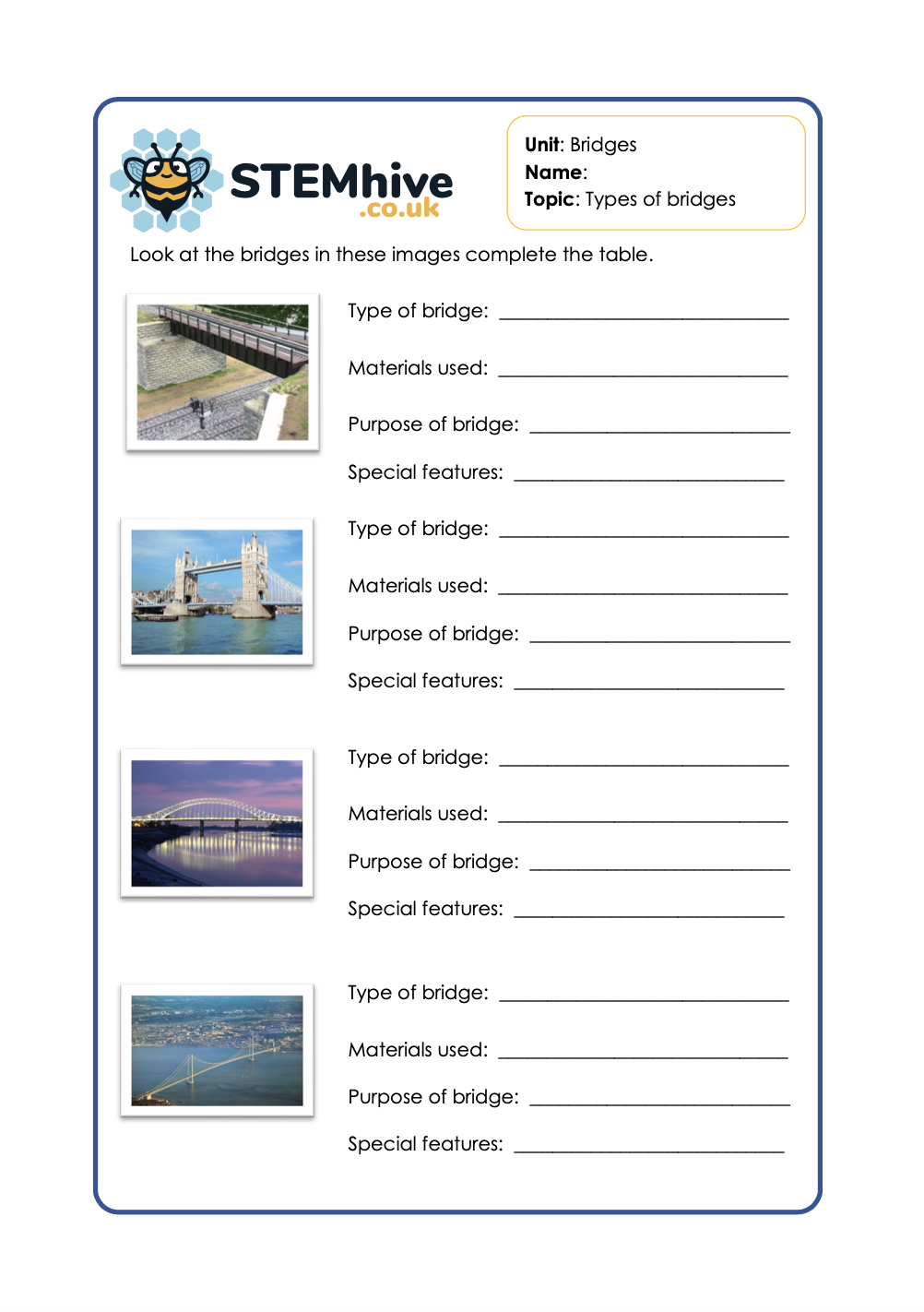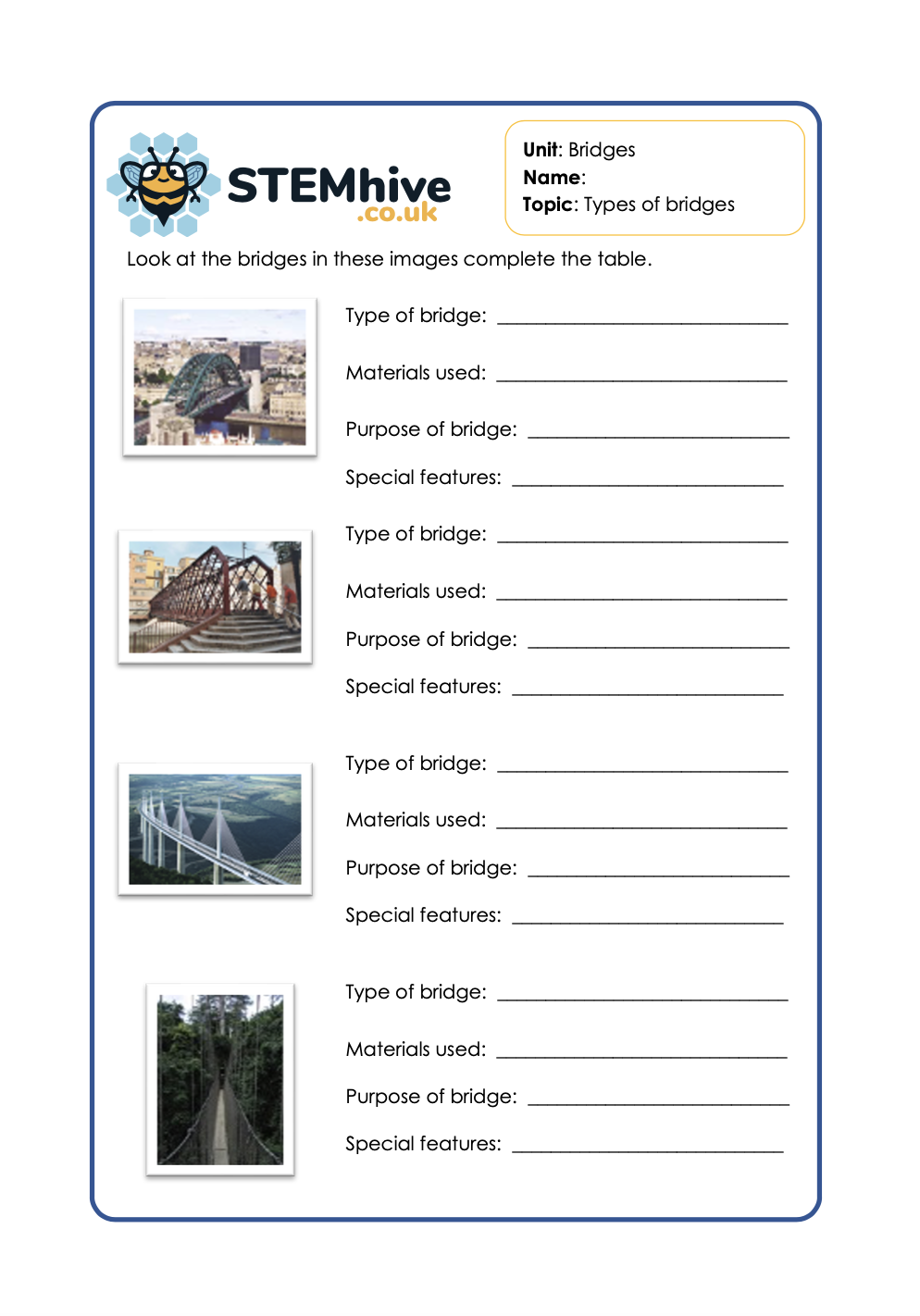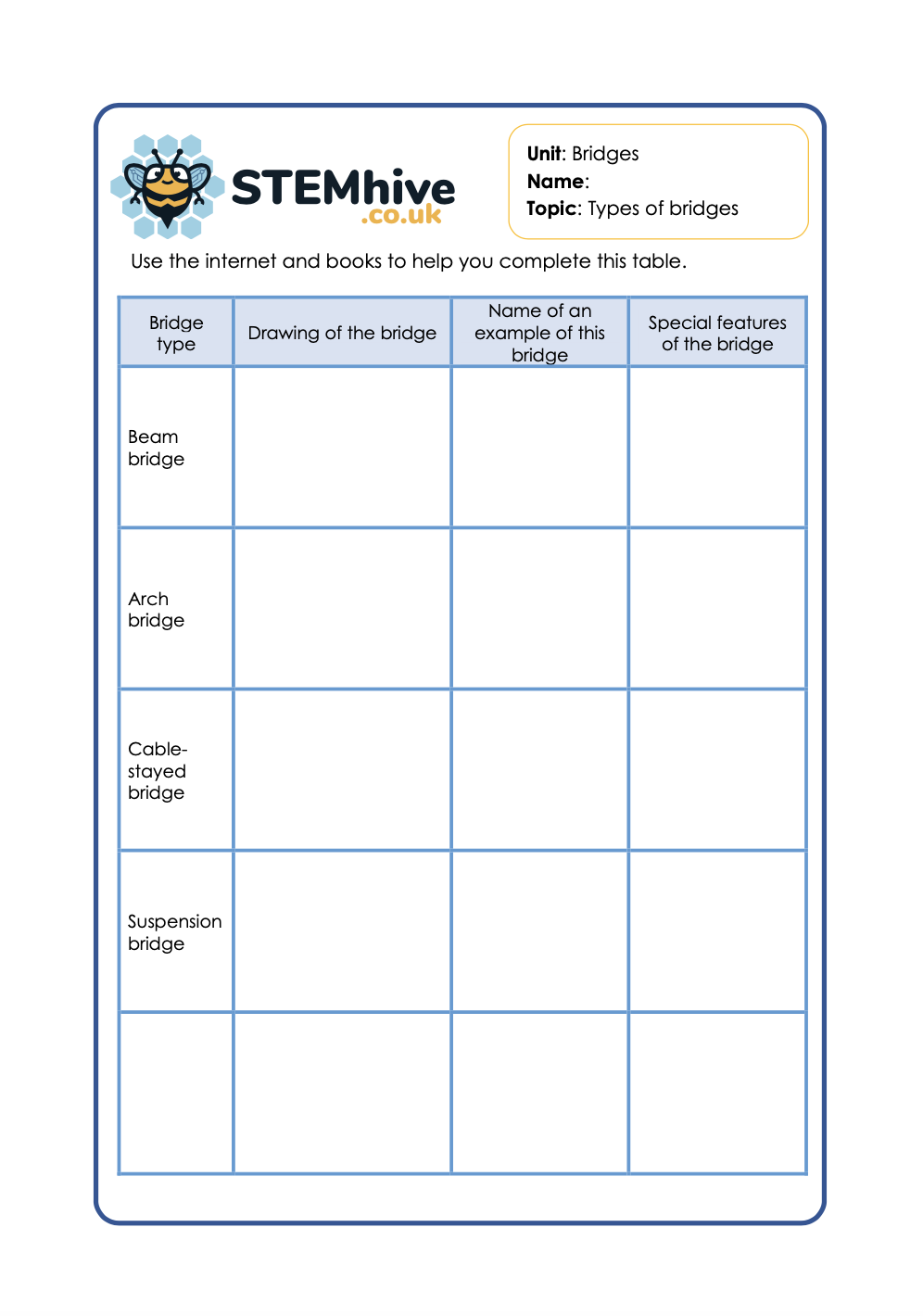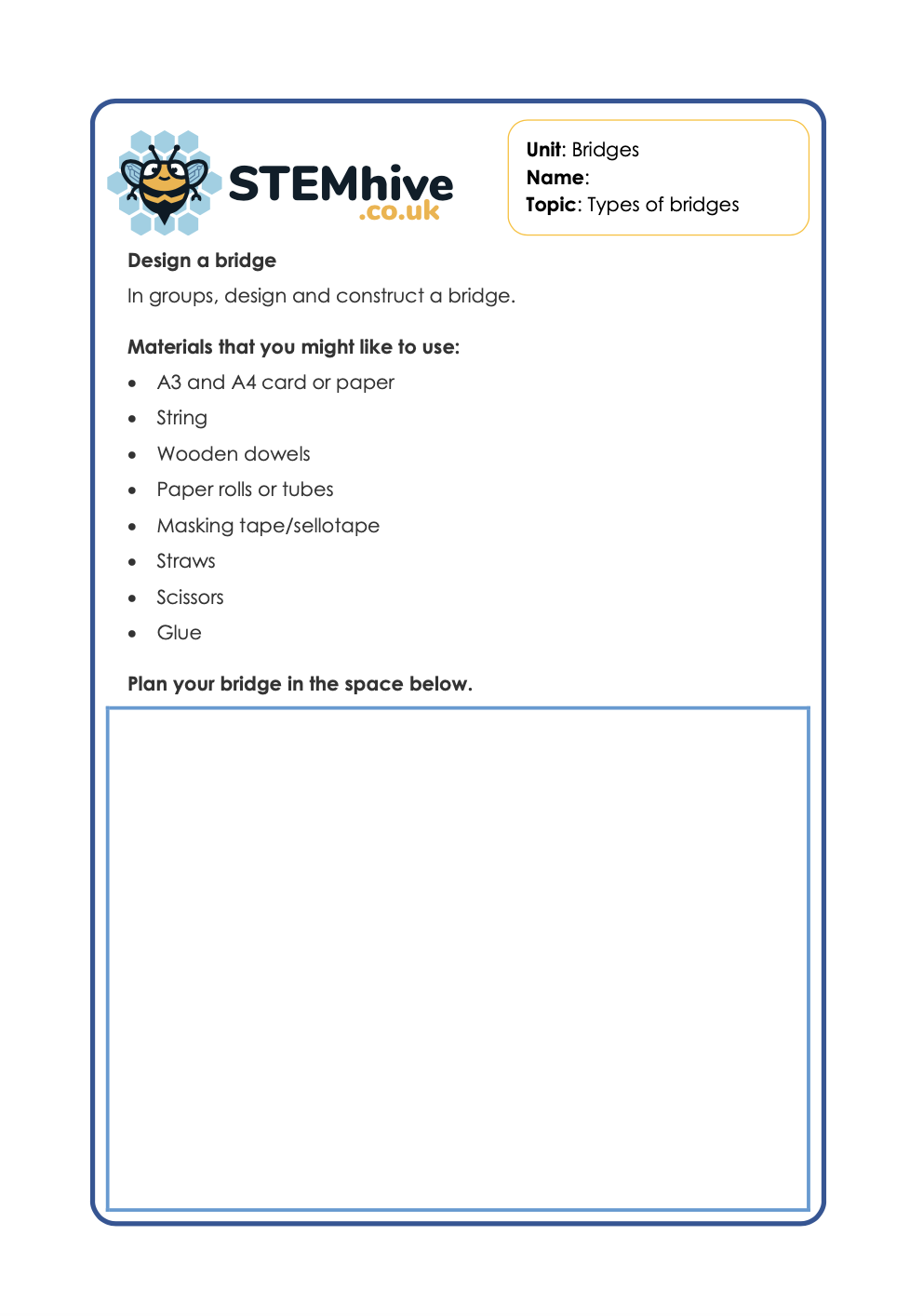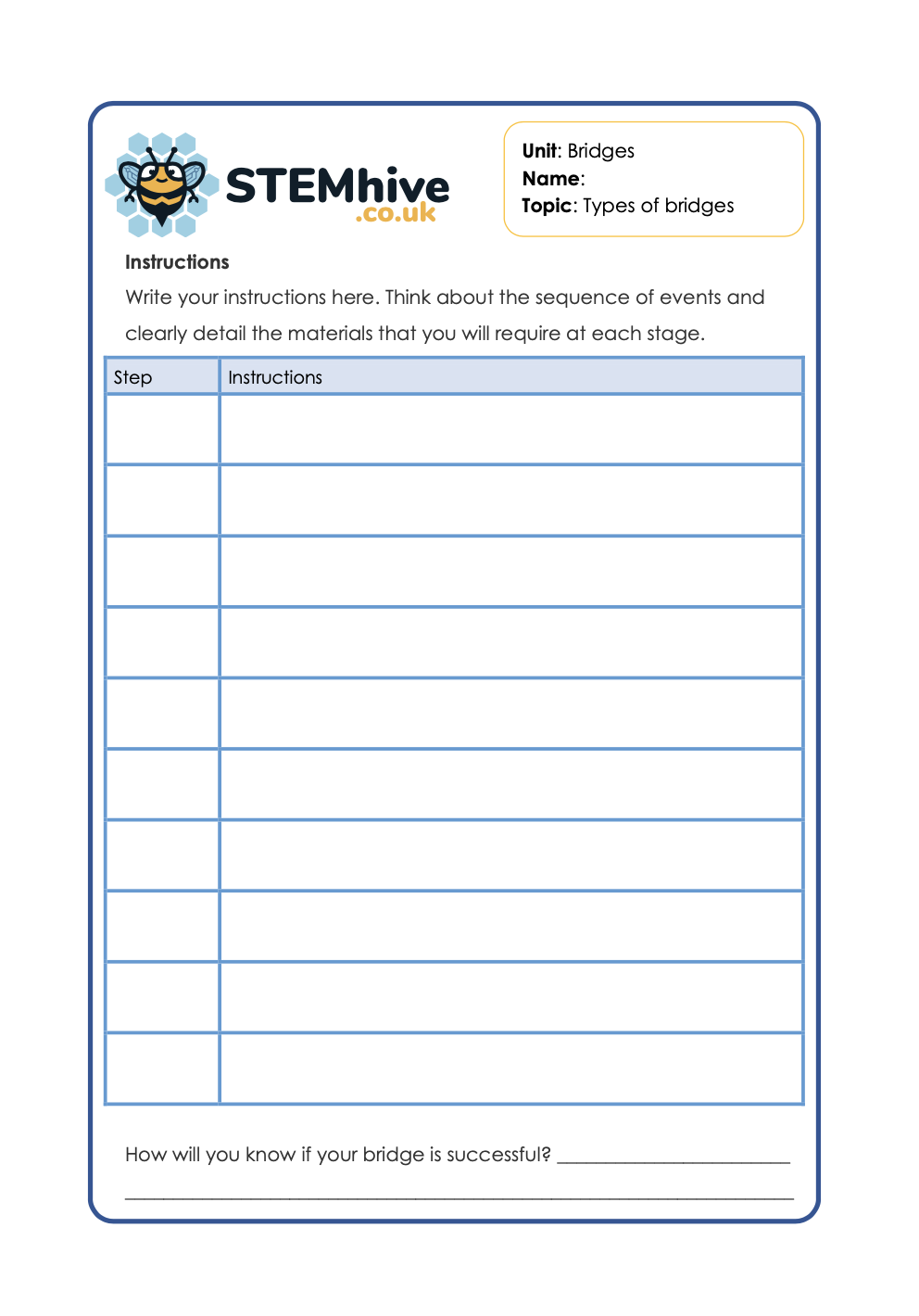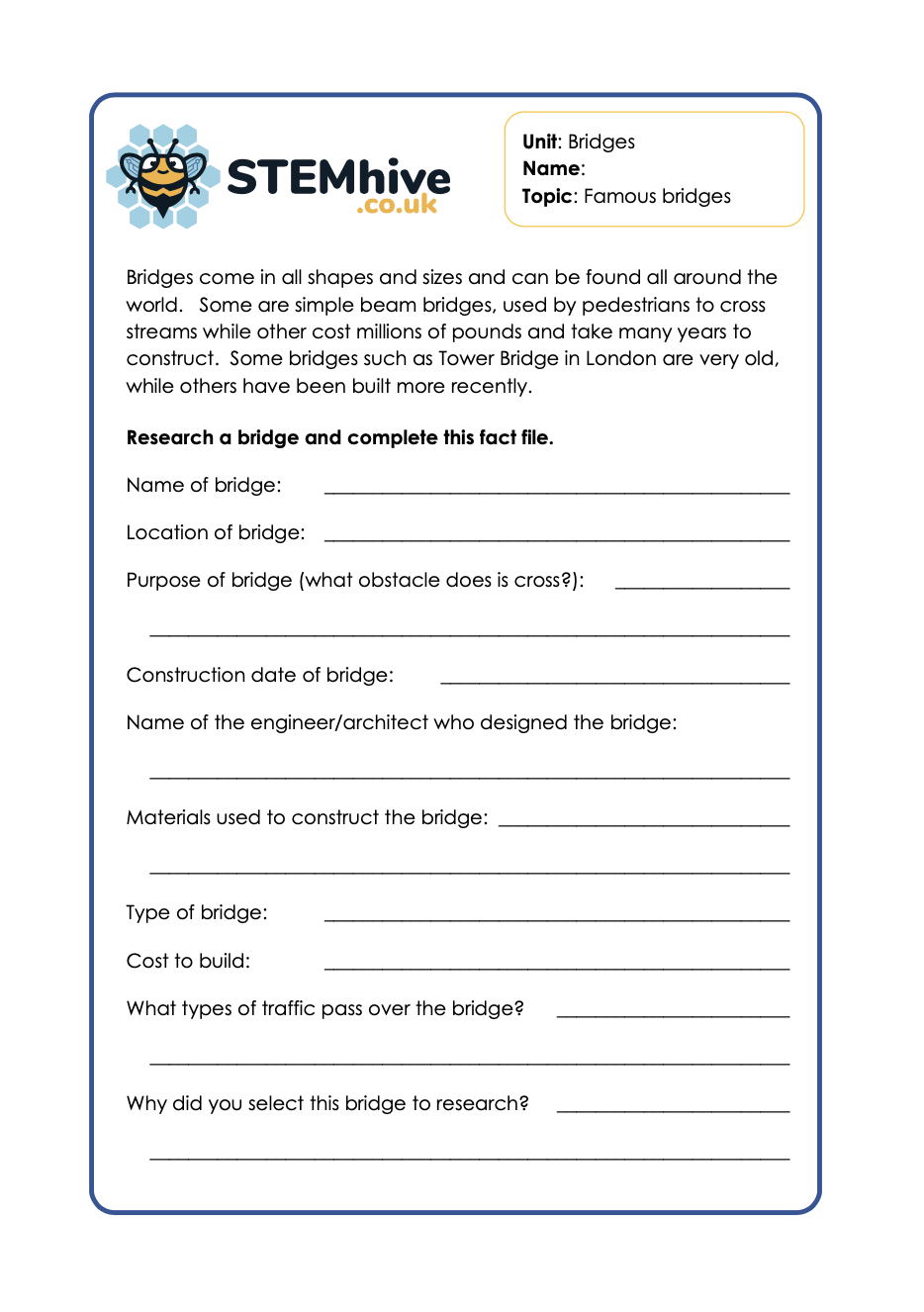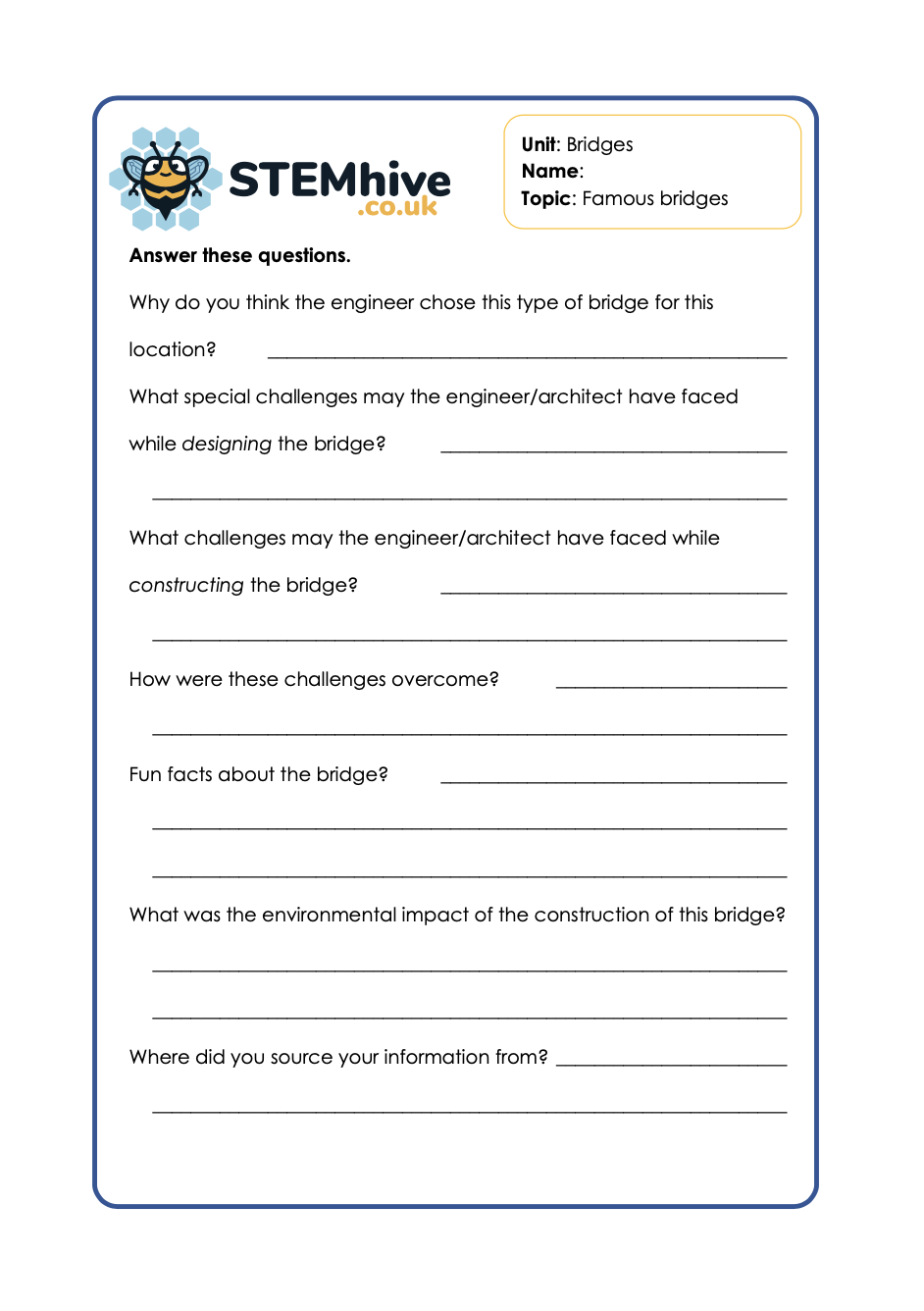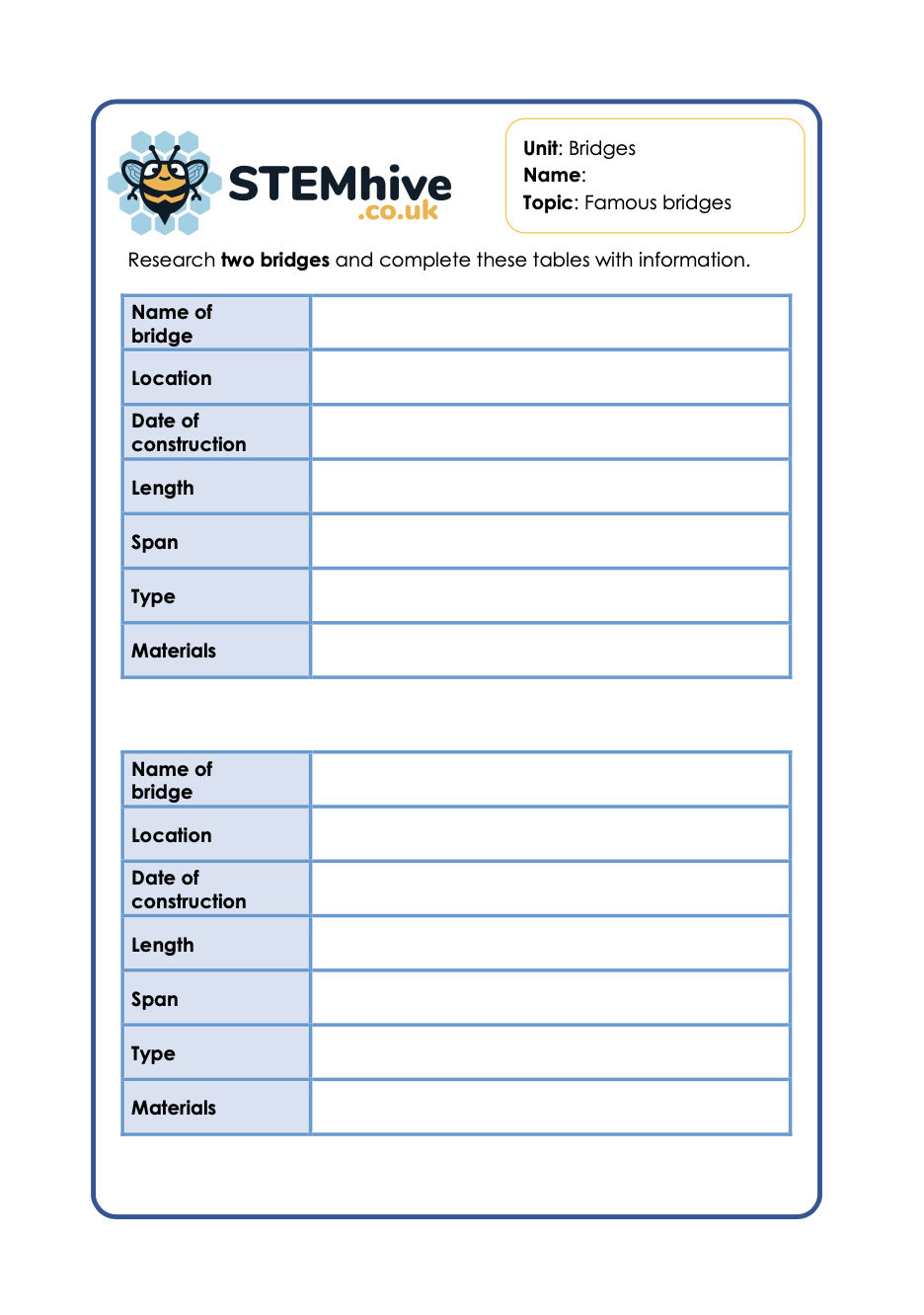Bridges
Main Focus: Why do we need bridges?
Bridges provide essential links between places and allow us to access resources, other places and people. Bridges allow roads to pass through many different types of terrain, over rivers and across valleys. They save time commuting and transporting goods and they help to connect places that would be inaccessible otherwise.
In this activity, your class will learn about different types of brides and use key vocabulary to complete the sentences about different bridges.
Finally, your class will then construct their own bridges using materials that can be found around the classroom.
Unlock ResourceMain Focus: Beam Bridges
The beam bridge is the oldest and simplest type of bridge. It is made from a beam that stretches across a gap and is supported by piers. Originally people would have used a long piece of stone or tree trunk to cross small streams. In a beam bridge, the load (weight of the beam and anything travelling across the bridge) pushes down on the piers and compresses the upper part of the beam (compression). This causes the lower part of the bridge to stretch and is placed under tension. Both the beam and the piers must be able to support the weight of the load. If the pressure is too great, the beam will break.
In this investigation your class will build a beam bridge and consider ways to reinforce the beam. You will make a bridge and test its strength by adding coins or other objects until the bridge collapses. You will then design three other bridges and test as before.
Main Focus: Art
This is an art activity that gives your class the opportunity to create some lovely silhouette bridges.
The children can create their own bridge designs.
Unlock ResourceMain Focus: Beam and Truss Bridges
Beam bridges can be strengthened by using trusses. Trusses are triangular structures. Engineers recognise that a triangle is a very strong shape to use in bridges and structures, as it is the only shape that is naturally rigid. You will often see triangular shapes used in skyscrapers.
Your class will work in teams to construct a spaghetti bridge using the triangulation technique. They will test their bridge by adding weight until it collapses.
They will then work in teams to construct a straw bridge using a triangulation technique.
Finally, they will work in teams to construct a lollypop stick bridge using a triangulation technique.
Main Focus: Arch Bridges
This is a brilliantly, informative resource that delves very deep into the construction and history of arch bridges. We have created some lovely activities to check the understanding of your class, as well as a sequencing activity on how to construct an arch bridge.
The arch bridge is another ancient form of bridge. They have been constructed for thousands of years and were first built by the Romans. While an arch bridge does have a beam along the top of it, it takes its name from the arch shaped structure which supports the weight at both ends (abutments). In the past, arch bridges were made from stones or bricks, but today they are constructed from steel and concrete.
Main Focus: Reinforcing Joints
Investigating Structures and Joins
To make a strong bridge, the engineer must ensure that the structure is safe and that any joints are as strong as possible.
Investigation 1 – The Straw Dilemma Part 1
A single paper art straw is not very strong. Investigate ways of making the straw stronger.
Complete the table.
Unlock ResourceMain Focus: Suspension Bridge
In this resource your KS2 class will learn key information about suspension bridges, label the bridge, complete a true or false activity, answer questions and create their own suspension bridge and test it.
A suspension bridge is a beam bridge that hangs from steel cables. It can be used where there is a long distance to be crossed. The steel cables are anchored in position at either end of the bridge by enormous concrete blocks, giving a suspension bridge an ‘M’ shape. The anchor blocks must be heavy and heavy enough to hold up the deck of the bridge and support any vehicles that will pass over the bridge.
Main Focus: Cable-stayed Bridge
The first modern cable-stayed bridge was opened in Sweden in 1956. A cable-stay bridge is a type of suspension bridge which was created as an economical way to span long distances. This bridge’s design and success were made possible with the development of new materials and construction techniques.
In this activity, your class will learn and analyse the advantages and disadvantages of this type of bridge as well as be able to make direct comparisons.
Main Focus: Summary
This is a summary of all the bridges that can be used at the end to recap over what has been learned. Your class will then recite the different bridges, structure, materials used, features, purpose etc. to show their understanding.
Your children will then design their own ultimate bridge and create instructions of how they built it.
Unlock ResourceMain Focus: Famous Bridges
Bridges come in all shapes and sizes and can be found all around the world. Some are simple beam bridges, used by pedestrians to cross streams while other cost millions of pounds and take many years to construct. Some bridges such as Tower Bridge in London are very old, while others have been built more recently.
Your KS2 class will research a bridge and complete this fact file. They will also answer a range of questions to encourage and challenge them to use their knowledge.

